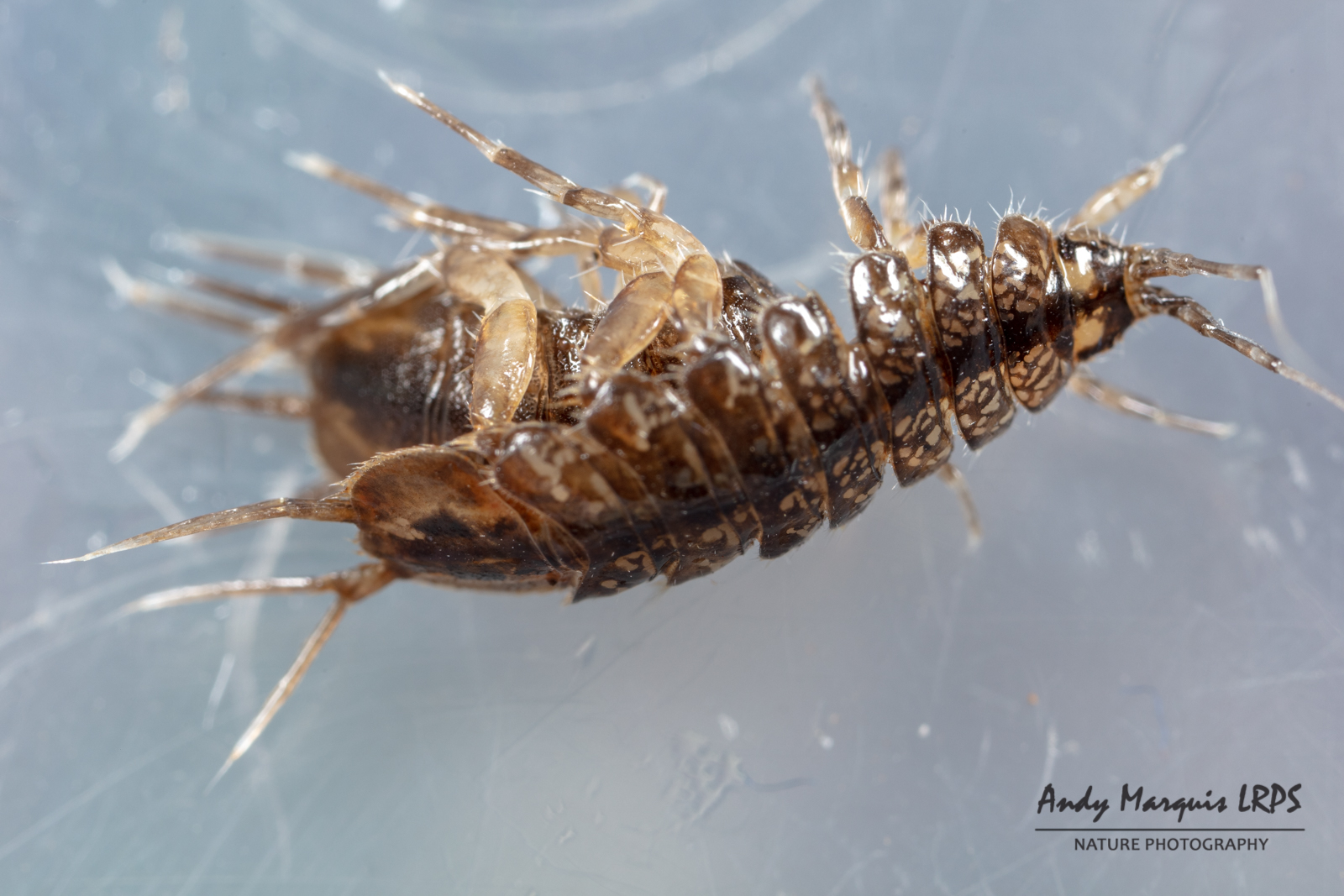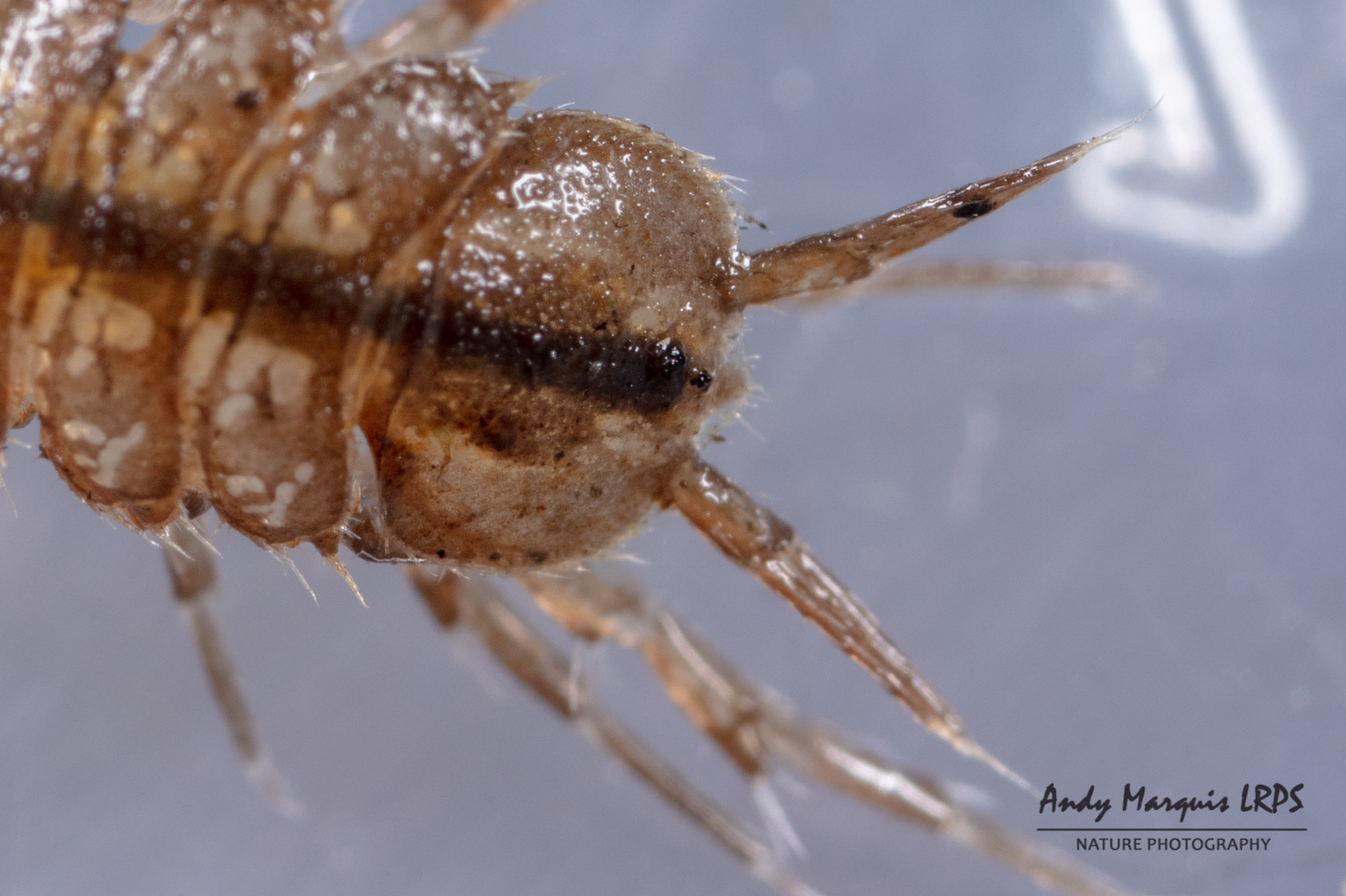Woodlice & Other Isopods of Guernsey
We all know a woodlouse when we see one, but did you know that there are more than 20 species recorded in Guernsey?
How many have
you seen? Have you notced that there are different species? Not
many of them have common names, those which do are the more
regularly seen ones.
The most common species locally are Porcellio scaber, the common rough woodlouse, which comes in a variety of sizes and colours which doesn't help the newcomer to woodlouse identification, but as you get used to it they come a lot easier and the ID points follow easily for the more common ones.
What do you need to look at to work out the species?
- The Antenna - the whole shape and size plus the number of parts to the end section (flagella).
- The Telson and Uropods (their back end).
- The general shape. Is the tail (Pleon) narrower than the body (Pereon) giving a stepped body outline.
- Colour and pattern can be important in some species but many are quite variable.
- Habitat. This is proving to be a little confusing in Guernsey as so many habitats cross over within a few hundred feet of each other.
- Lungs, if you flip a woodlouse upside down, you can see the white lungs of some species, the number of pairs of lungs is an identifier for some species.
- Eyes - Do they have eyes? If they do (some are blind), how many ocelli make up the eye, what colour are the Ocelli?
- Size - Some are only about 2mm long as adults where the Porcellio scaber can get up to around 18mm.
- Hair/bumps -
some are hairy, some are covered in bumpy tubercles, some are
smooth.
- Facebook Group - Isopods of Britain and Ireland
- BMIG Website - www.BMIG.org.uk
My current species list for Guernsey is now up to 19 species, I continue the search for others which occur in the historic records:
- Androniscus dentiger - Rosy Woodlouse
- Armadillidium vulgare - Common Pill Woodlouse
- Chaetophiloscia
cellaria - see
this link for info on this find!
- Halophiloscia couchii
- Haplophthalmus danicus
- Haplophthalmus mengii
- Ligia oceanica -
Sea Slater (no longer actually a woodlouse but a marine
isopod)
- Miktoniscus patiencei
- Oniscus asellus
- Common Shiny Woodlouse
- Philoscia muscorum - Common Striped Woodlouse
- Platyarthrus hoffmannseggi - Ant Woodlouse
- Porcellio dilatatus
- Porcellio scaber - Common Rough Woodlouse
- Porcellionides cingendus
- Porcellionides pruinosus
- Trichoniscoides saeroeensis
- Trichoniscus
pusillus - Common Pygmy Woodlouse
- Trichoniscus
pygmeus - Least Pygmy Woodlouse
- Waterlouse - Asellus aquaticus (an honorary woodlouse)
Androniscus dentiger - Rosy Woodlouse
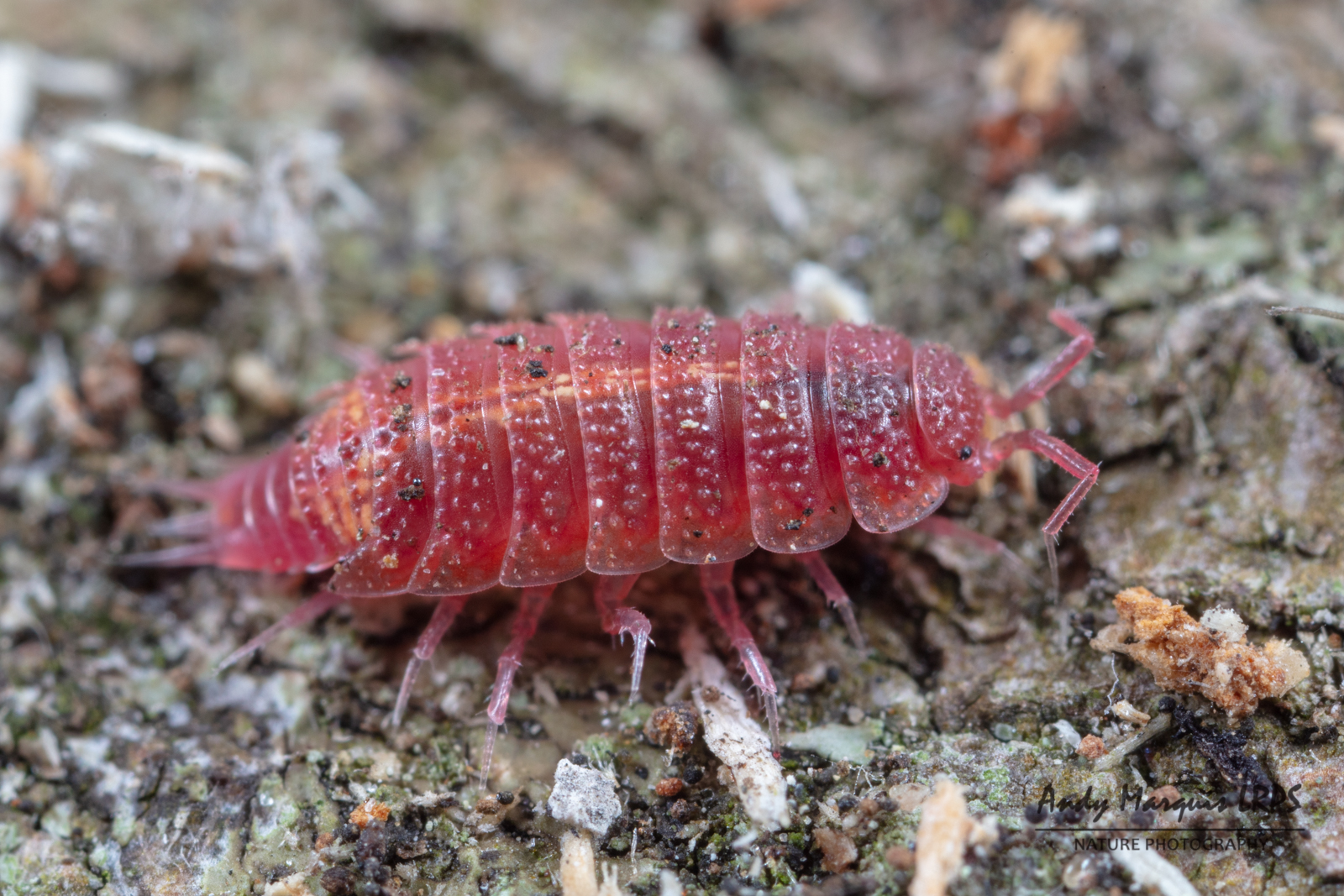

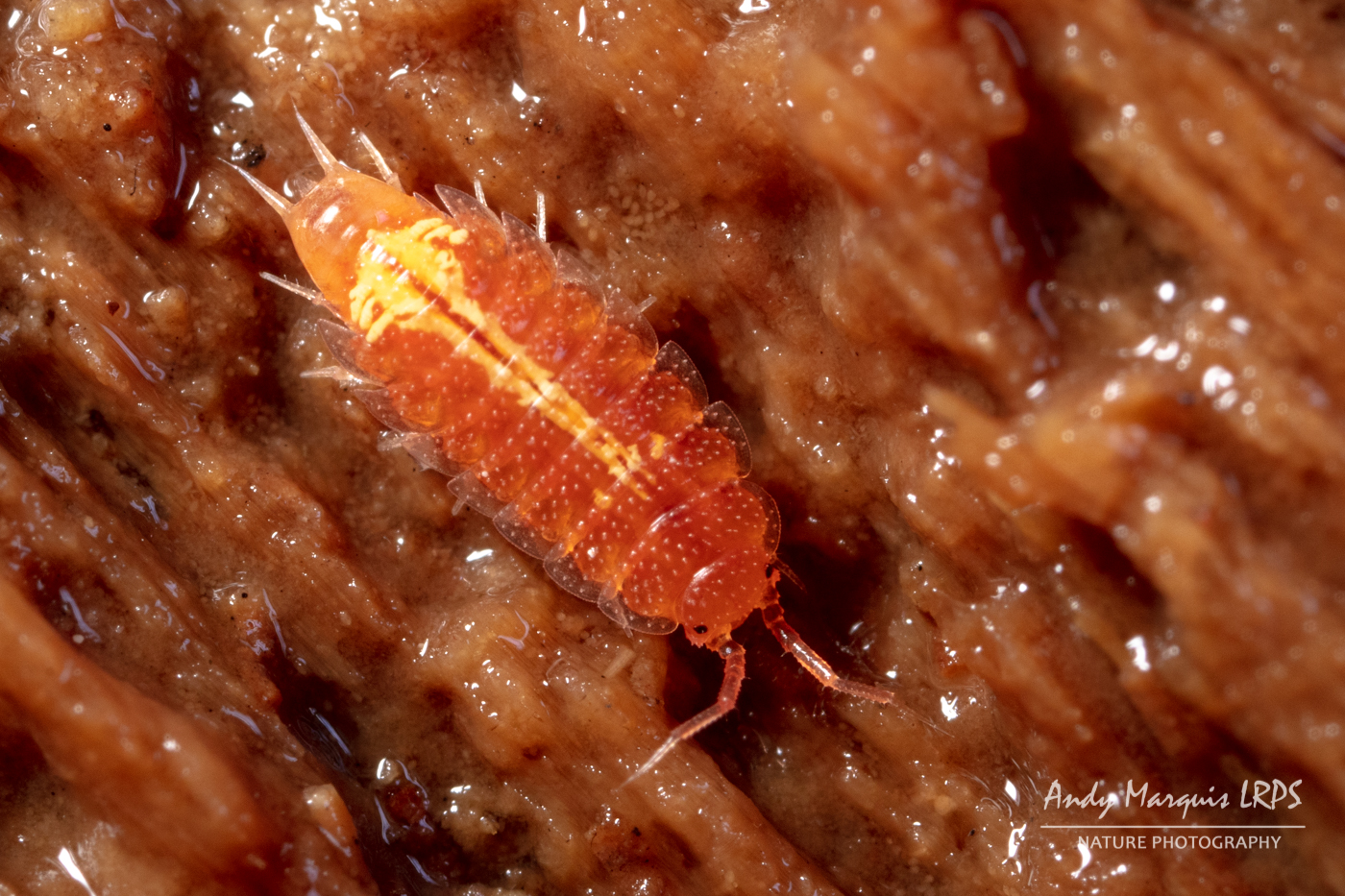
Armadillidium vulgare - Common Pill Woodlouse

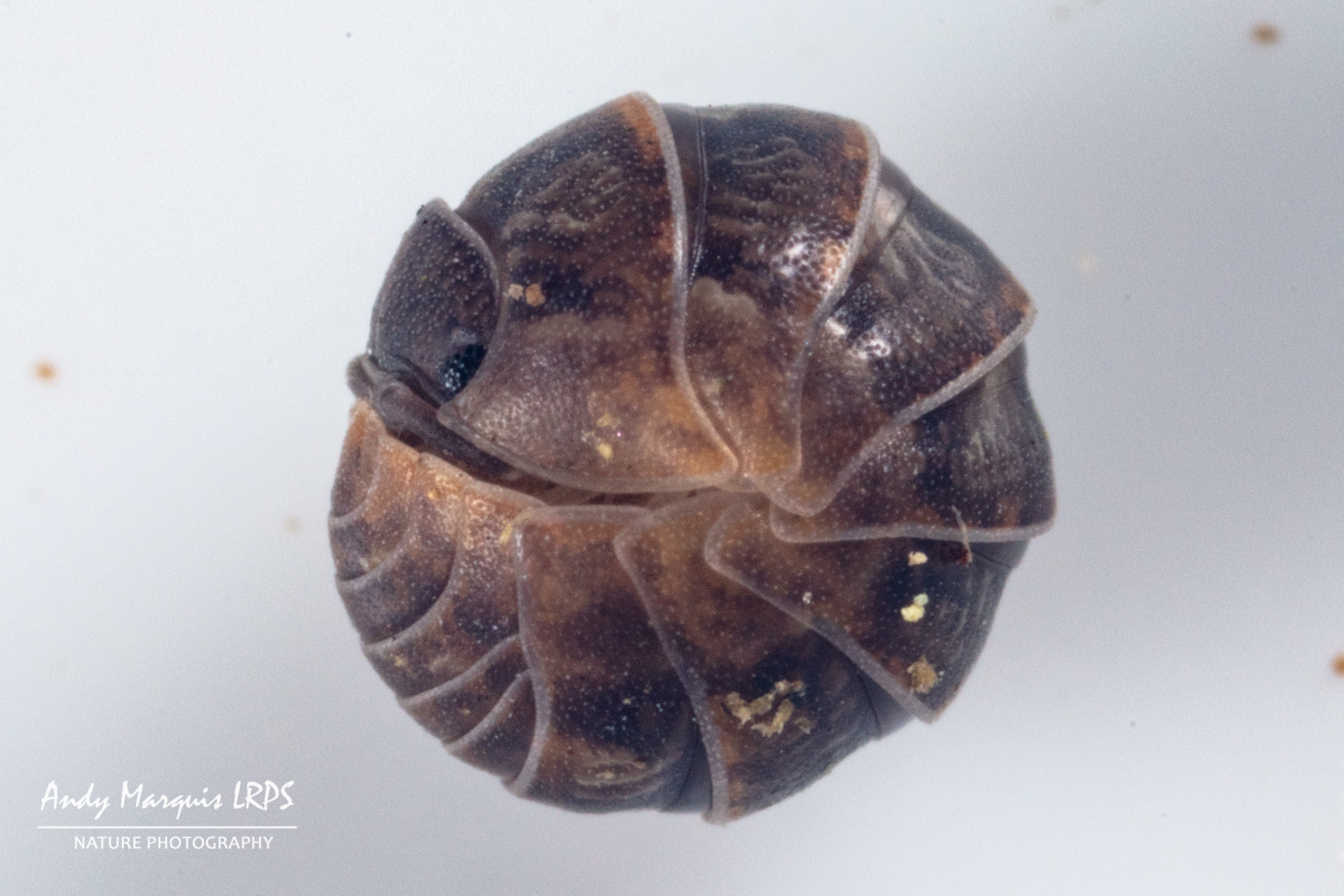
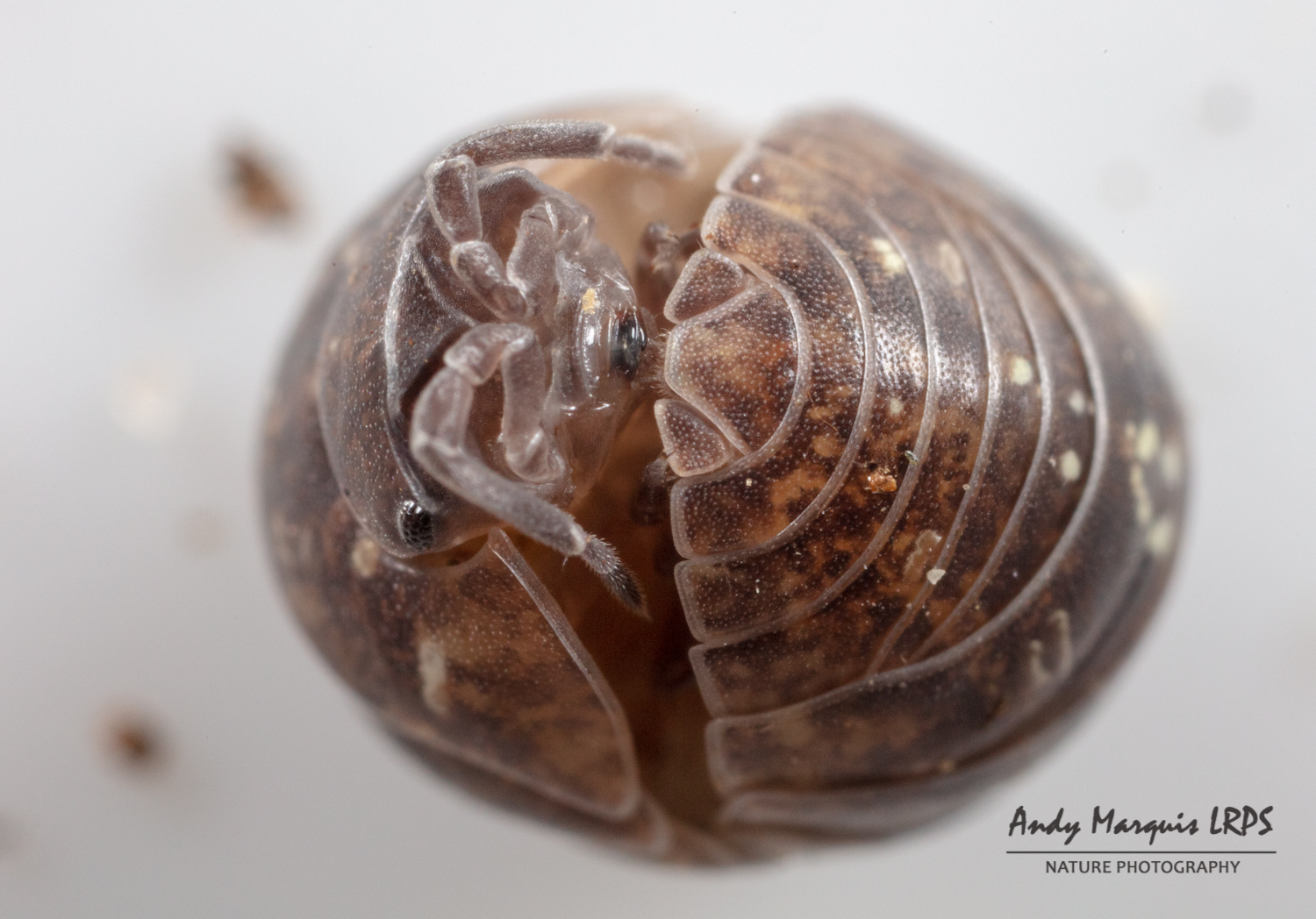
Chaetophiloscia cellaria
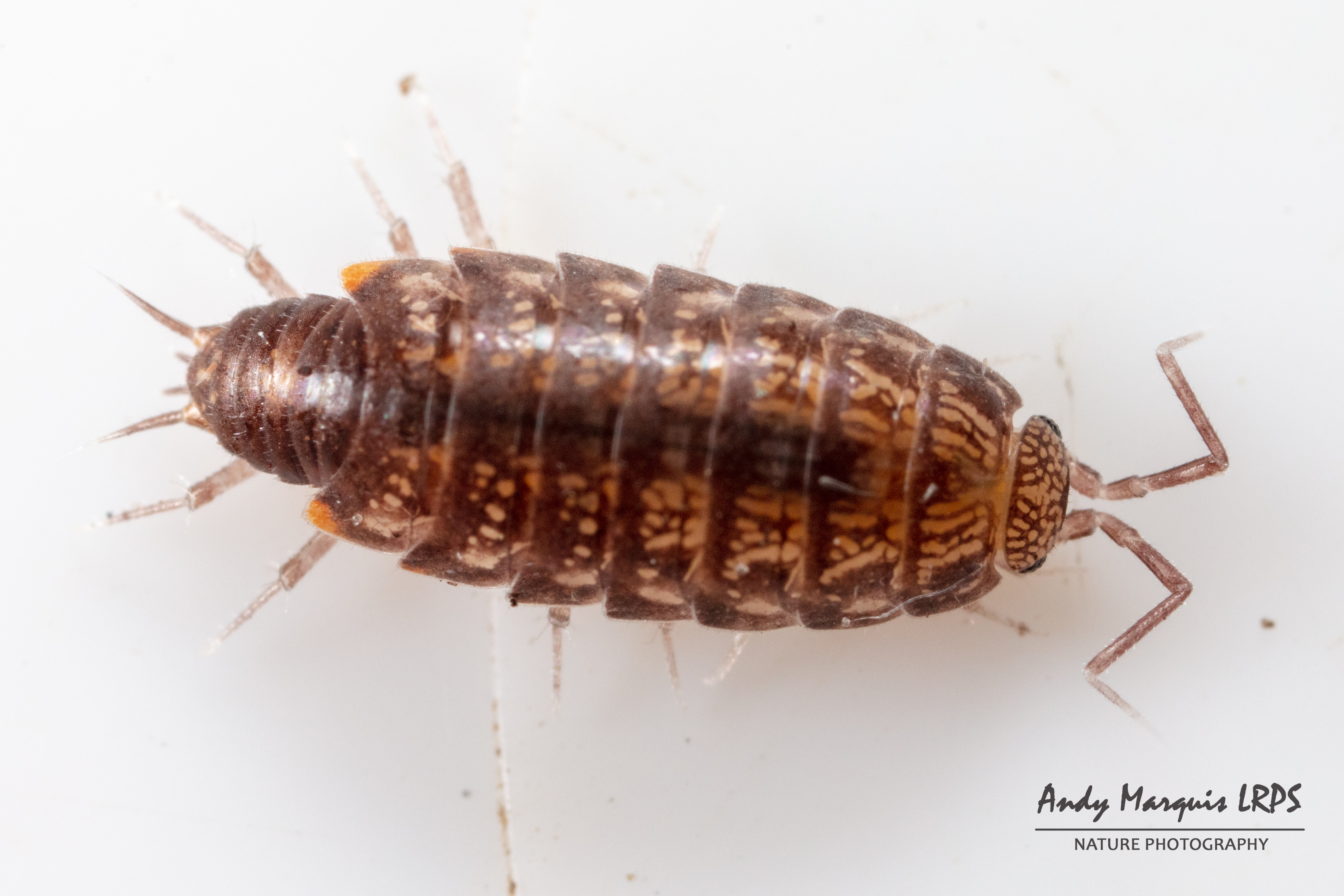
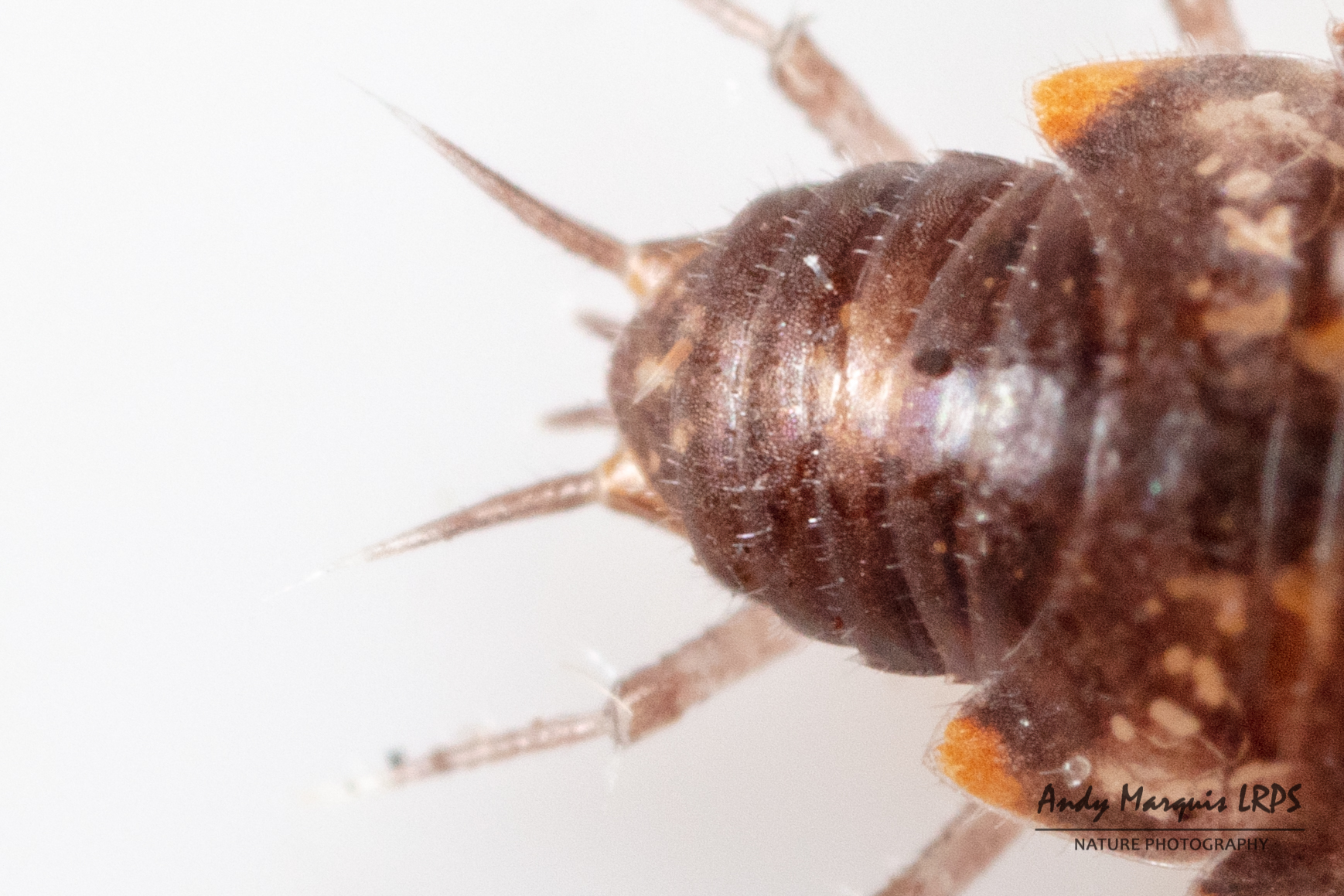
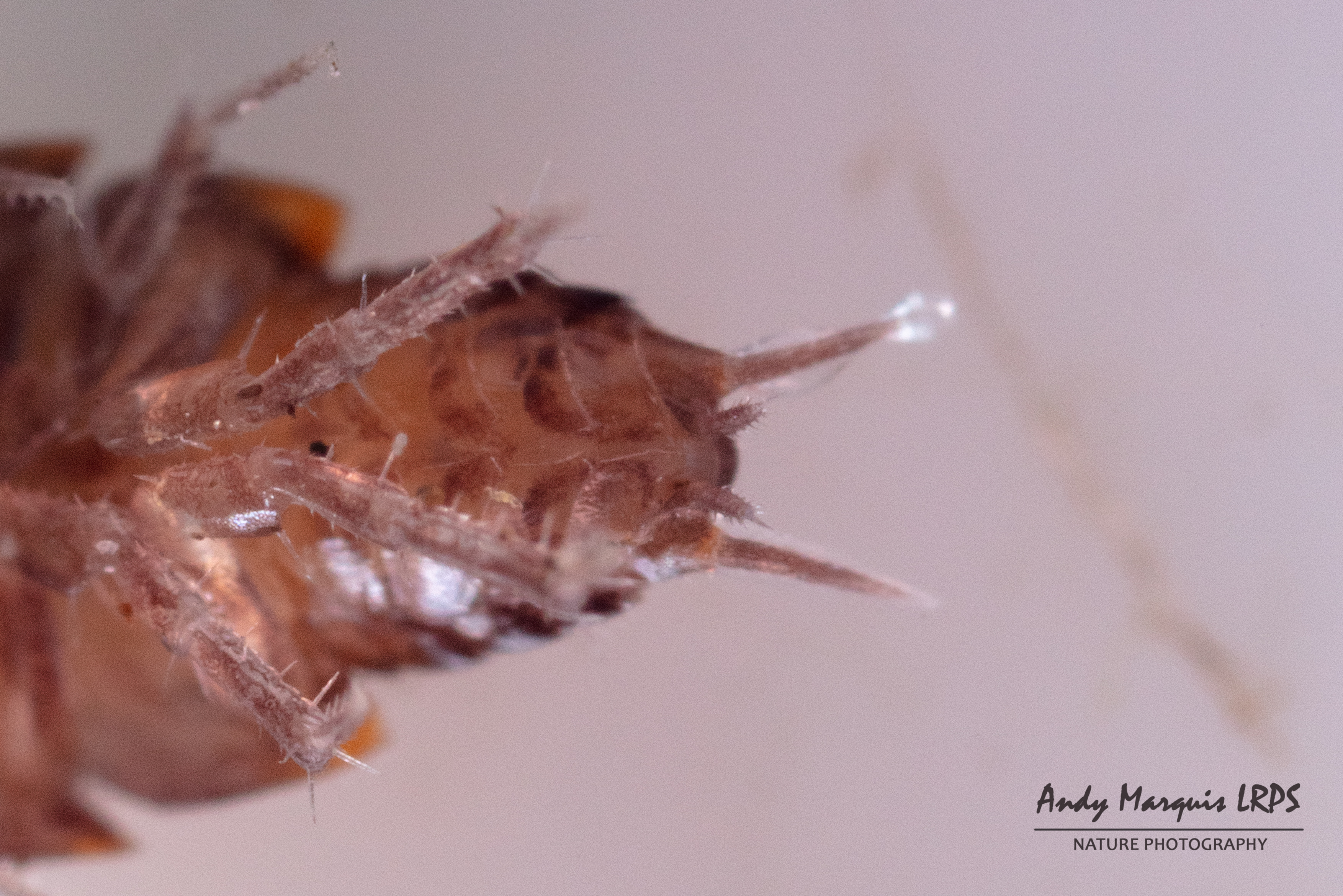
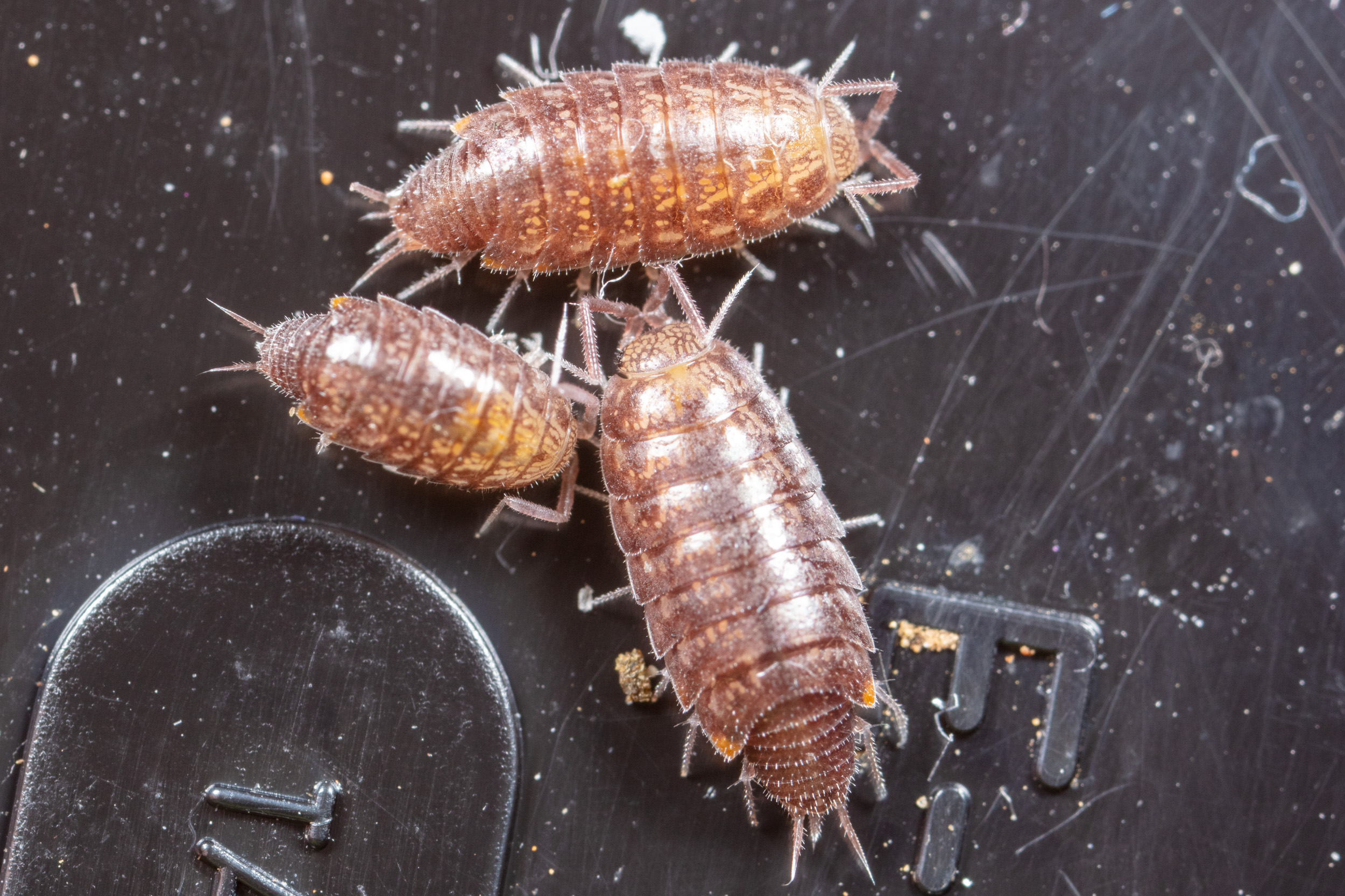
Halophiloscia couchii
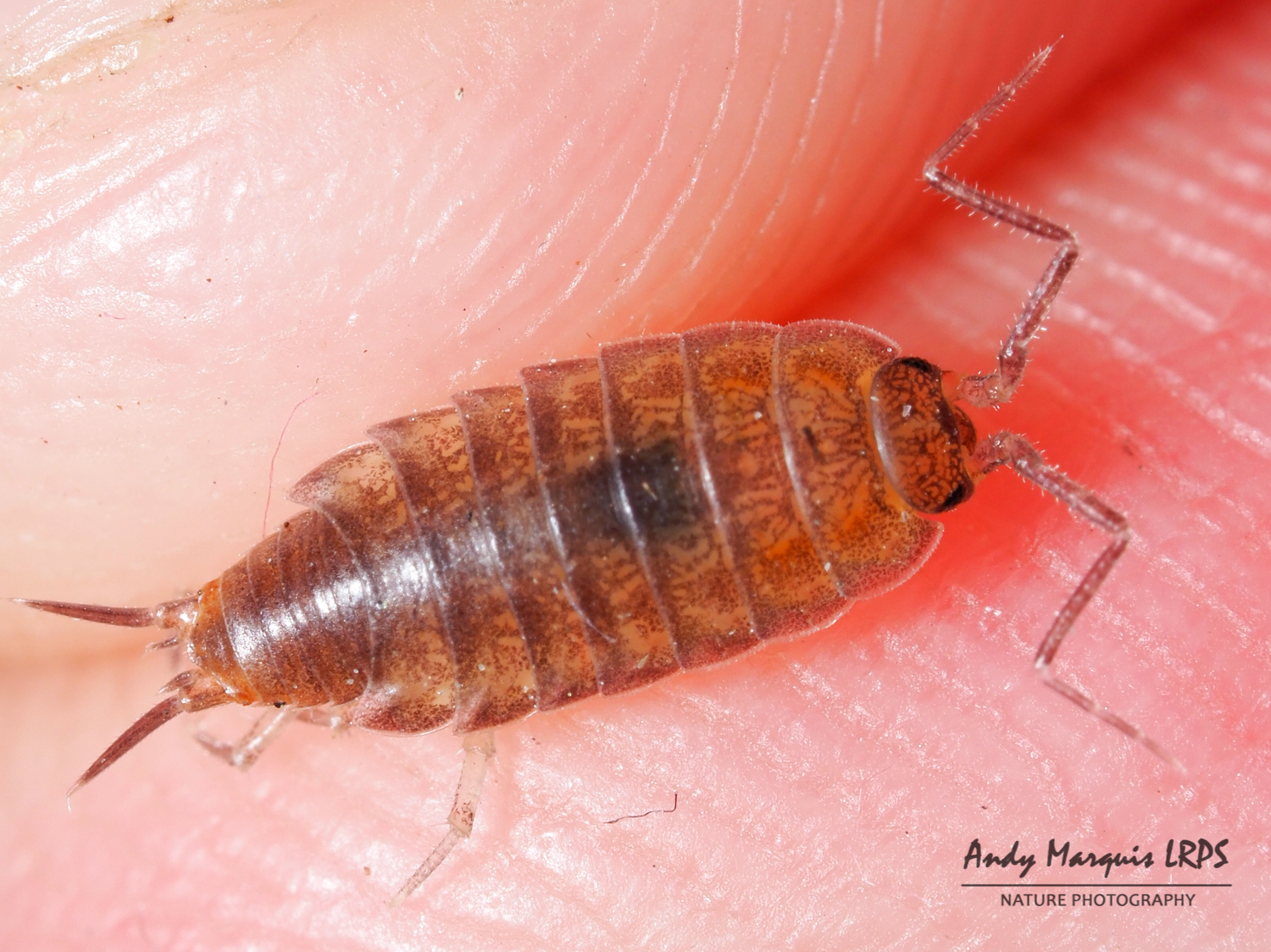

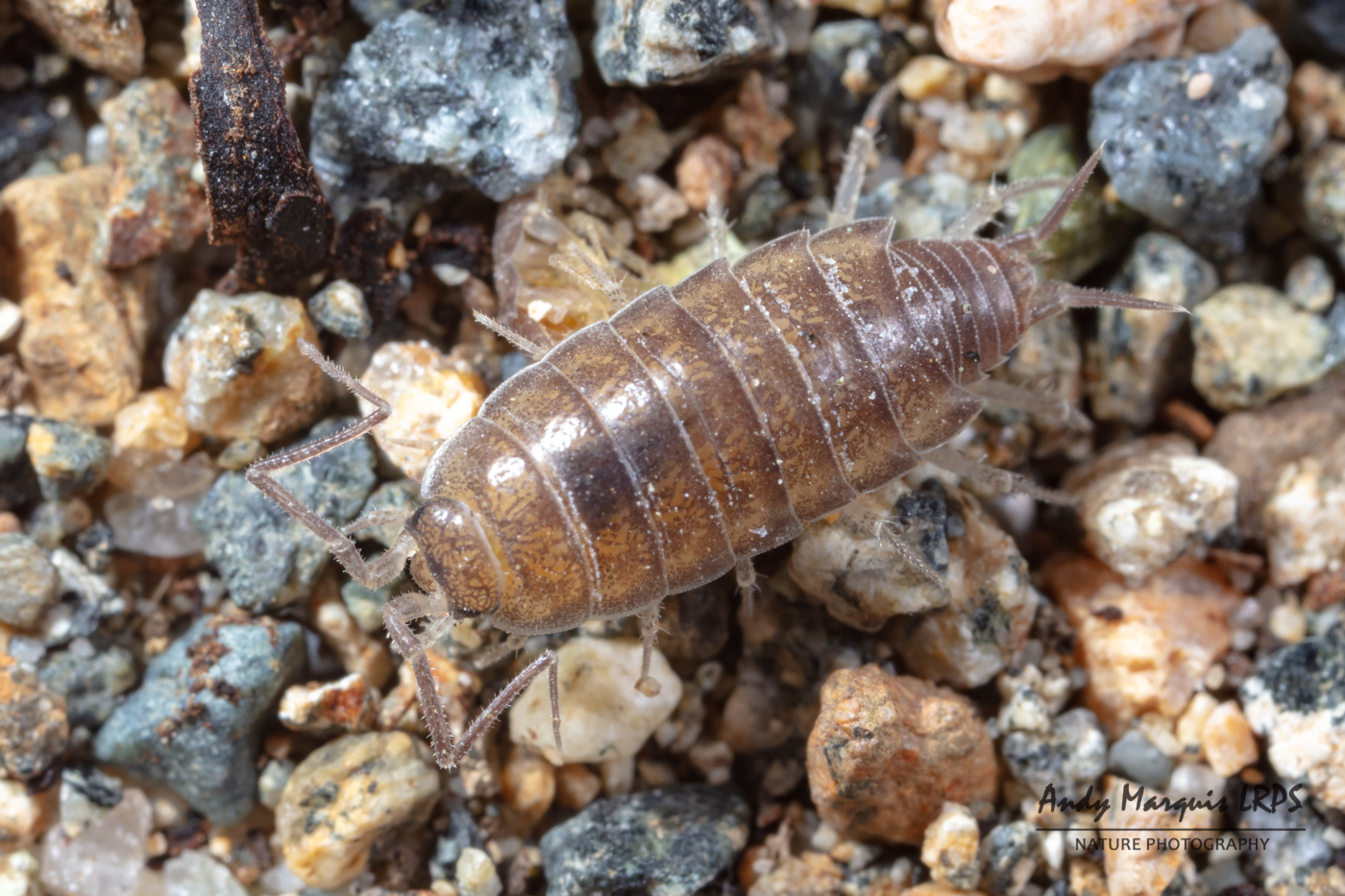
Haplophthalmus danicus
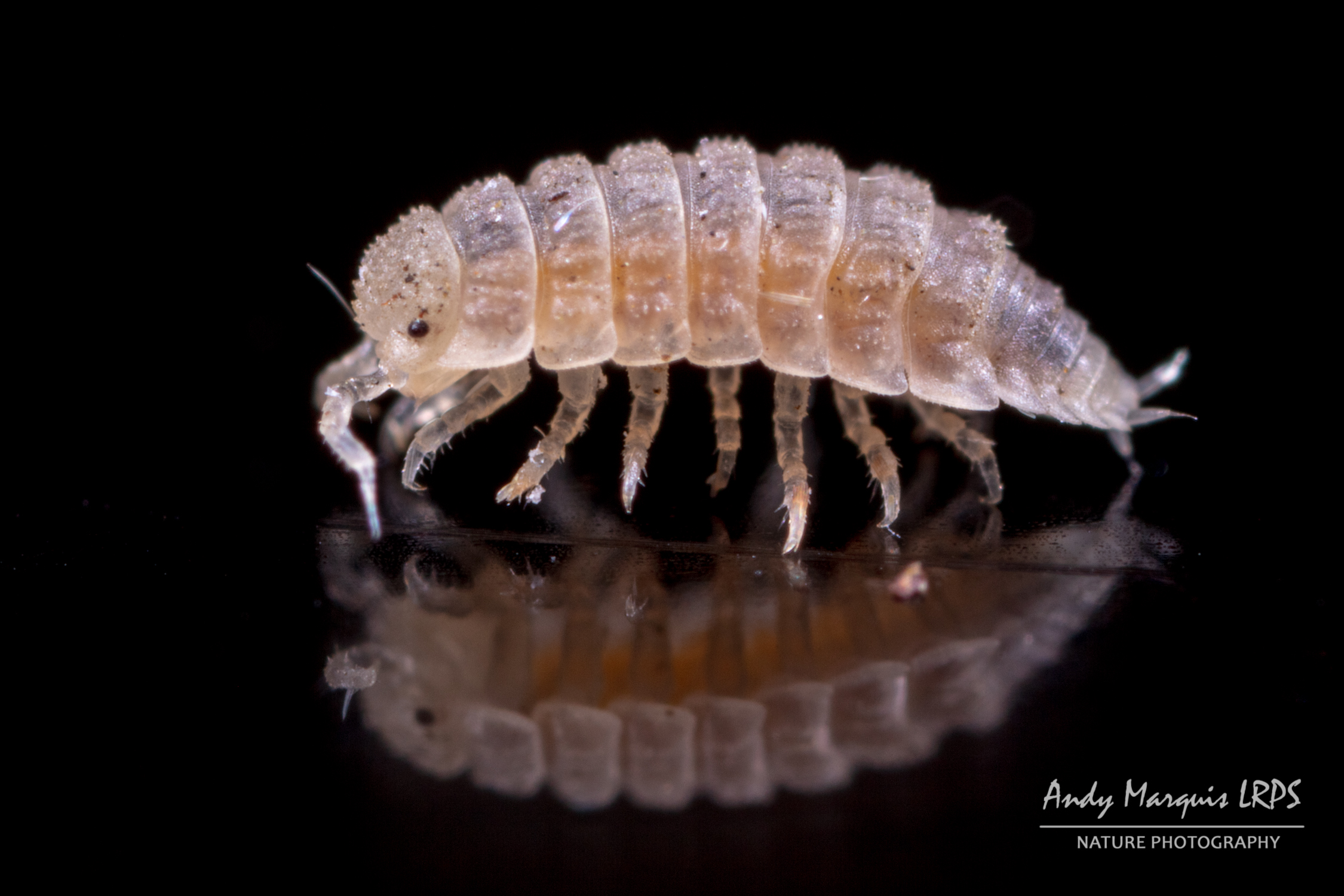
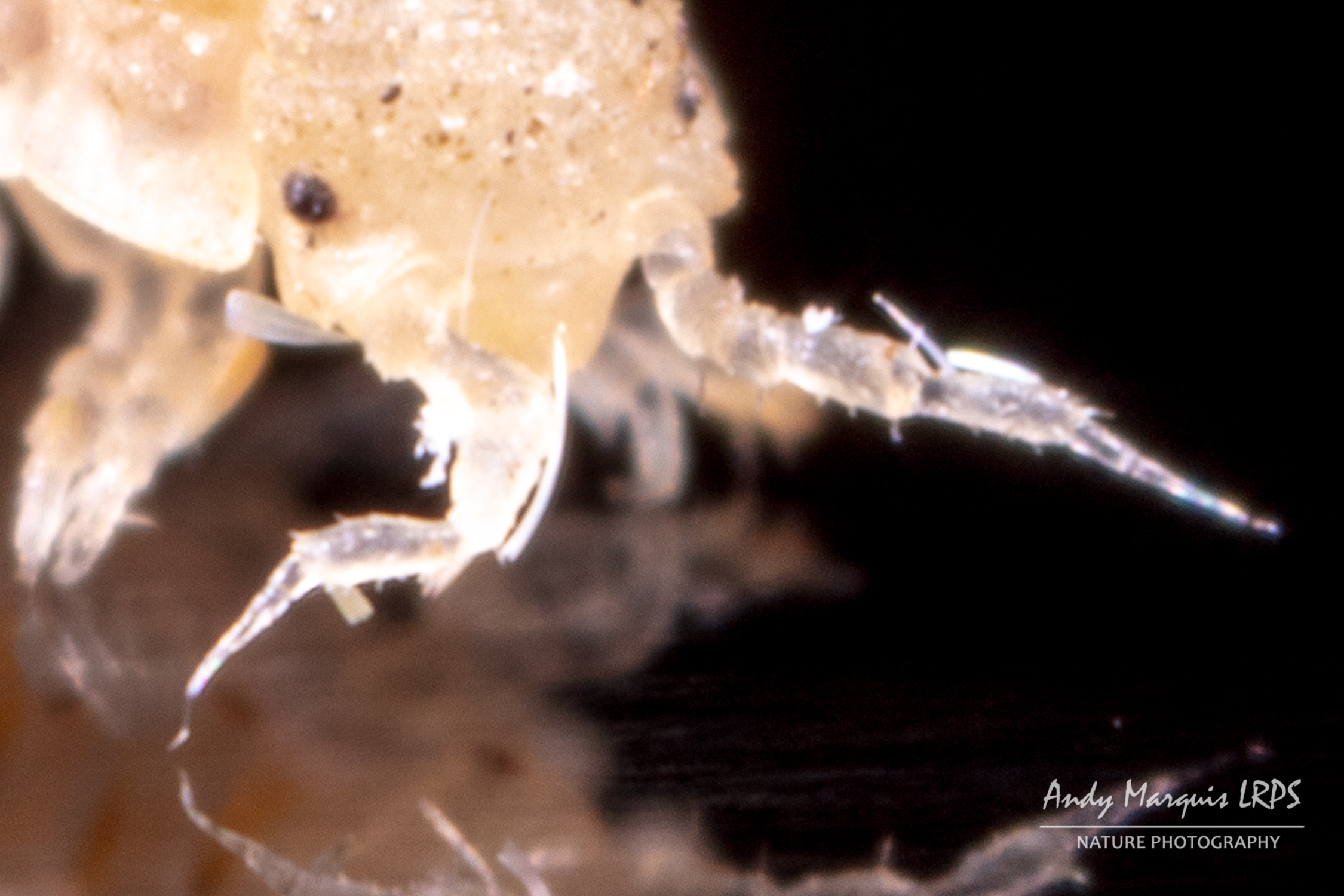

Haplophthalmus mengii
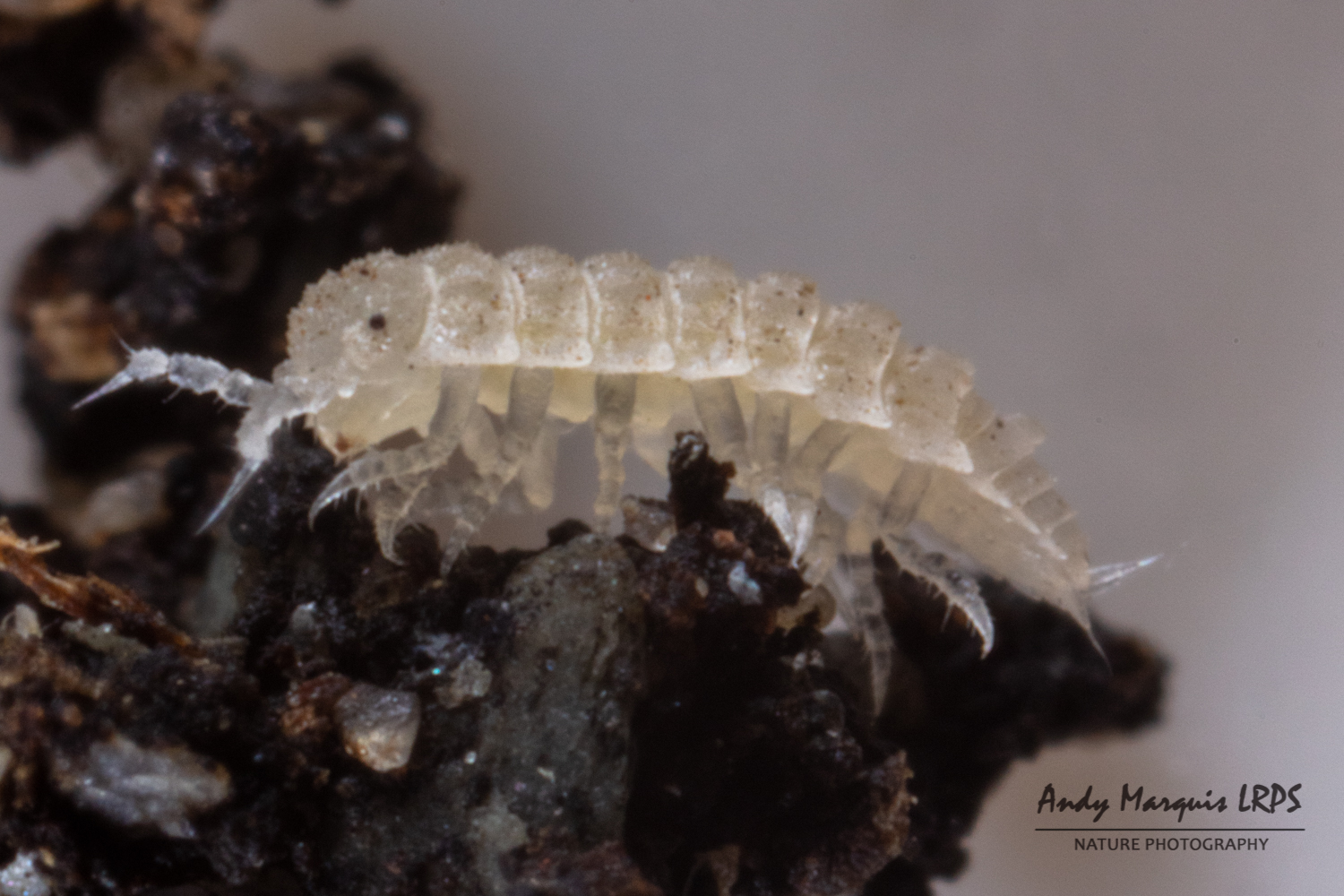
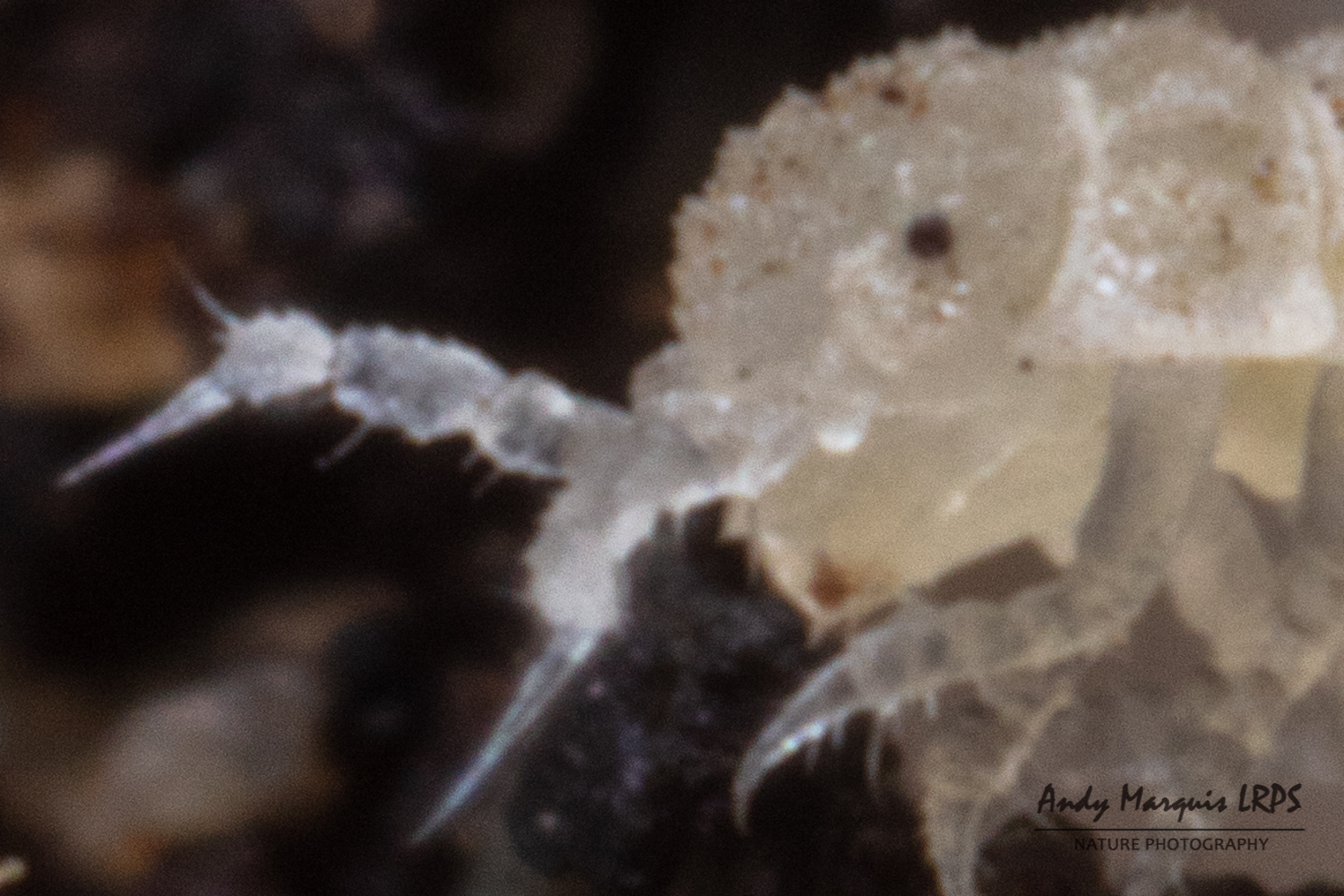
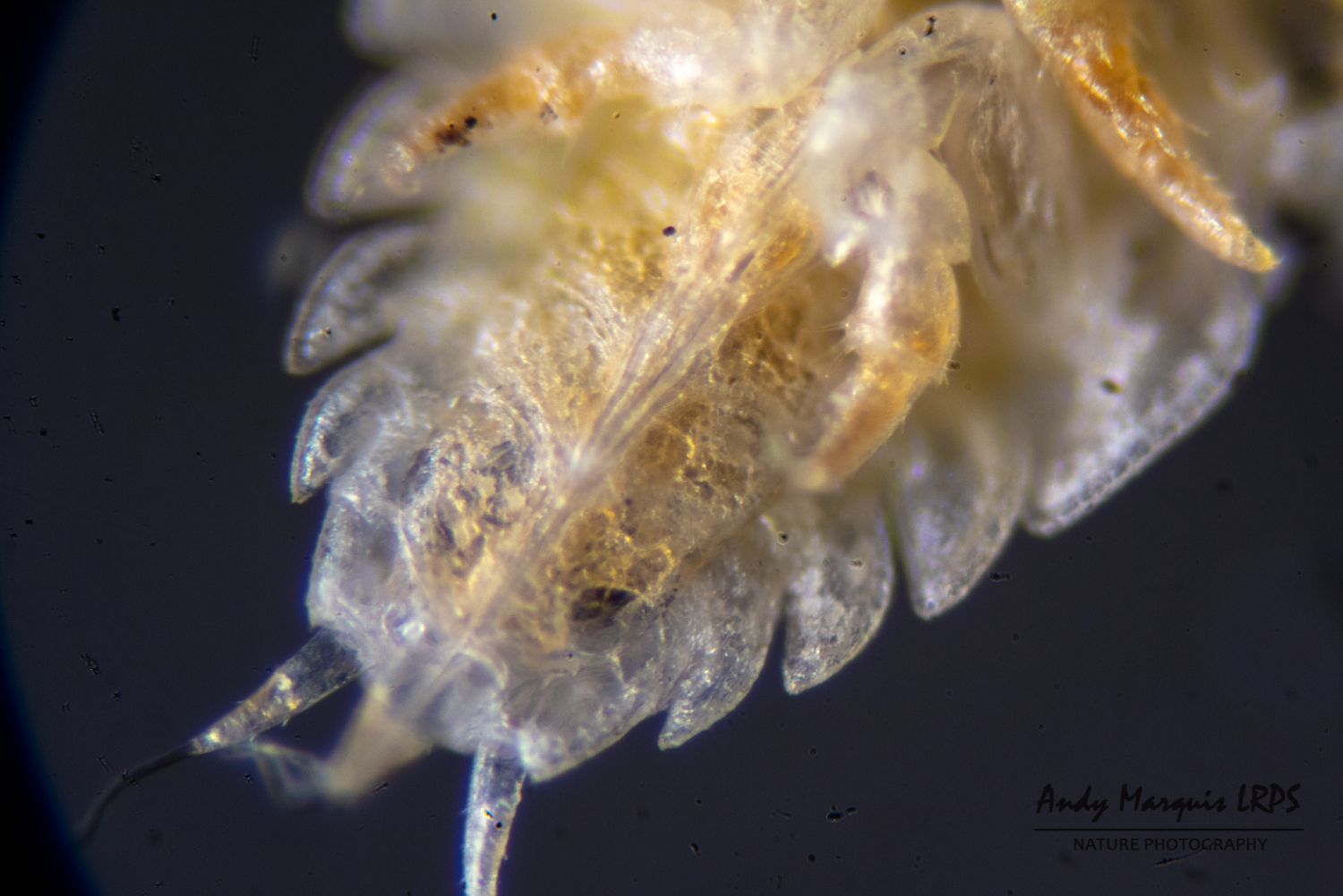
Ligia oceanica - Sea Slater (a marine isopod)
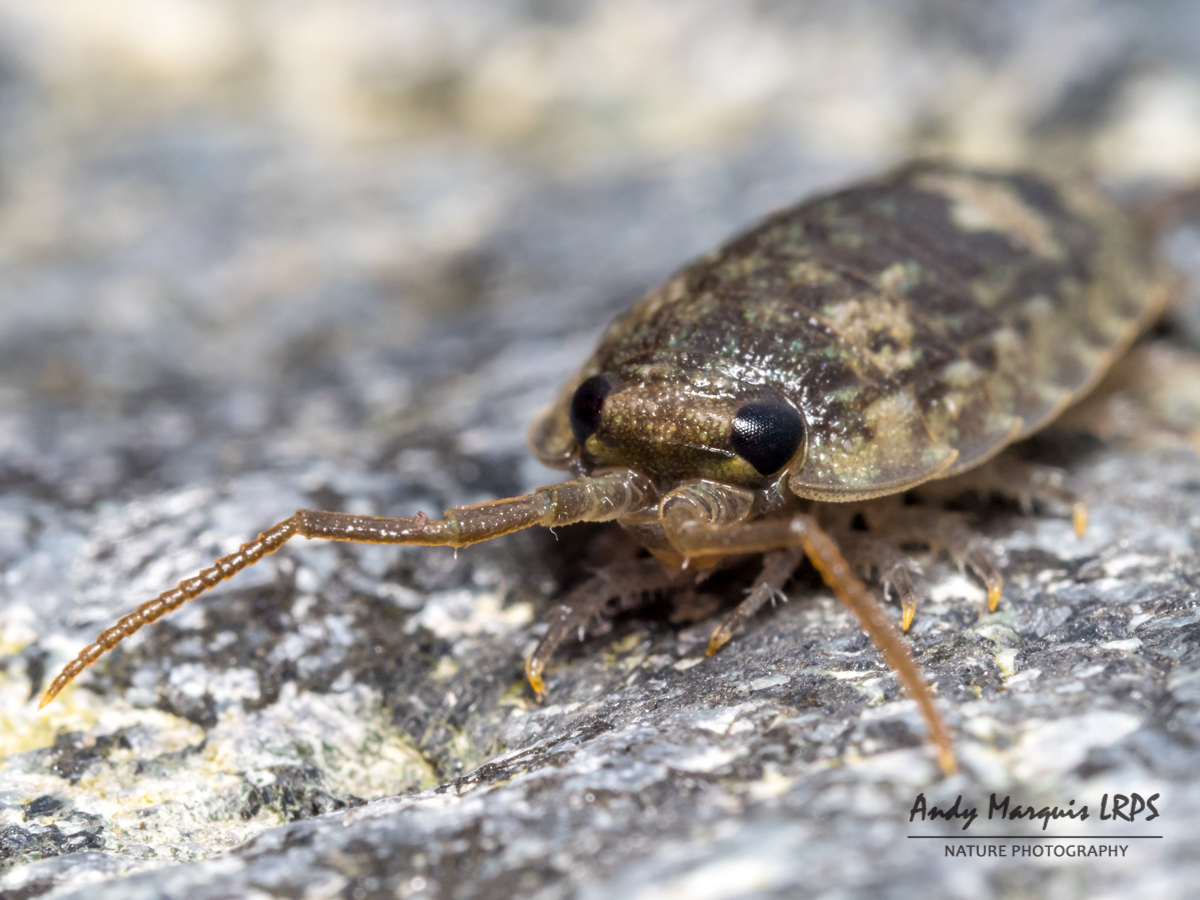

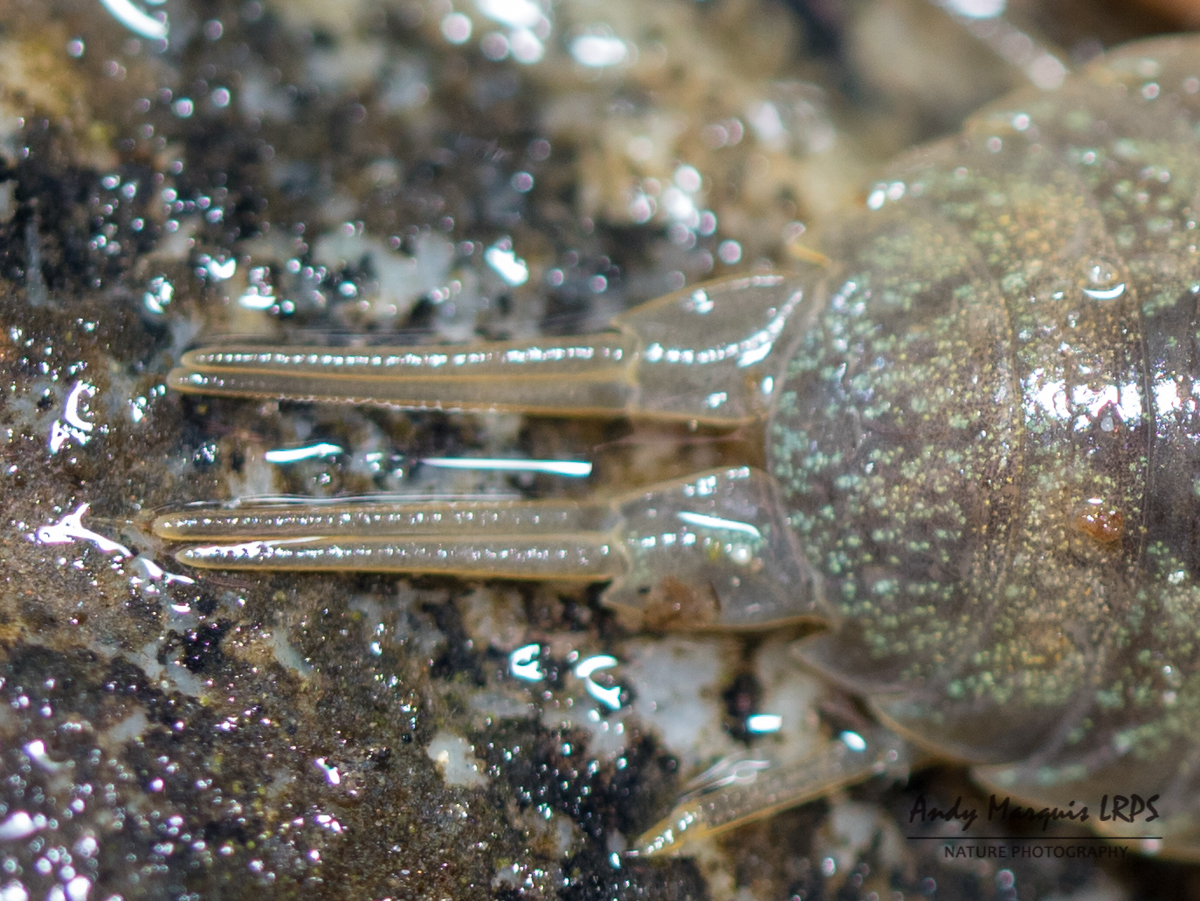
Miktoniscus patiencei
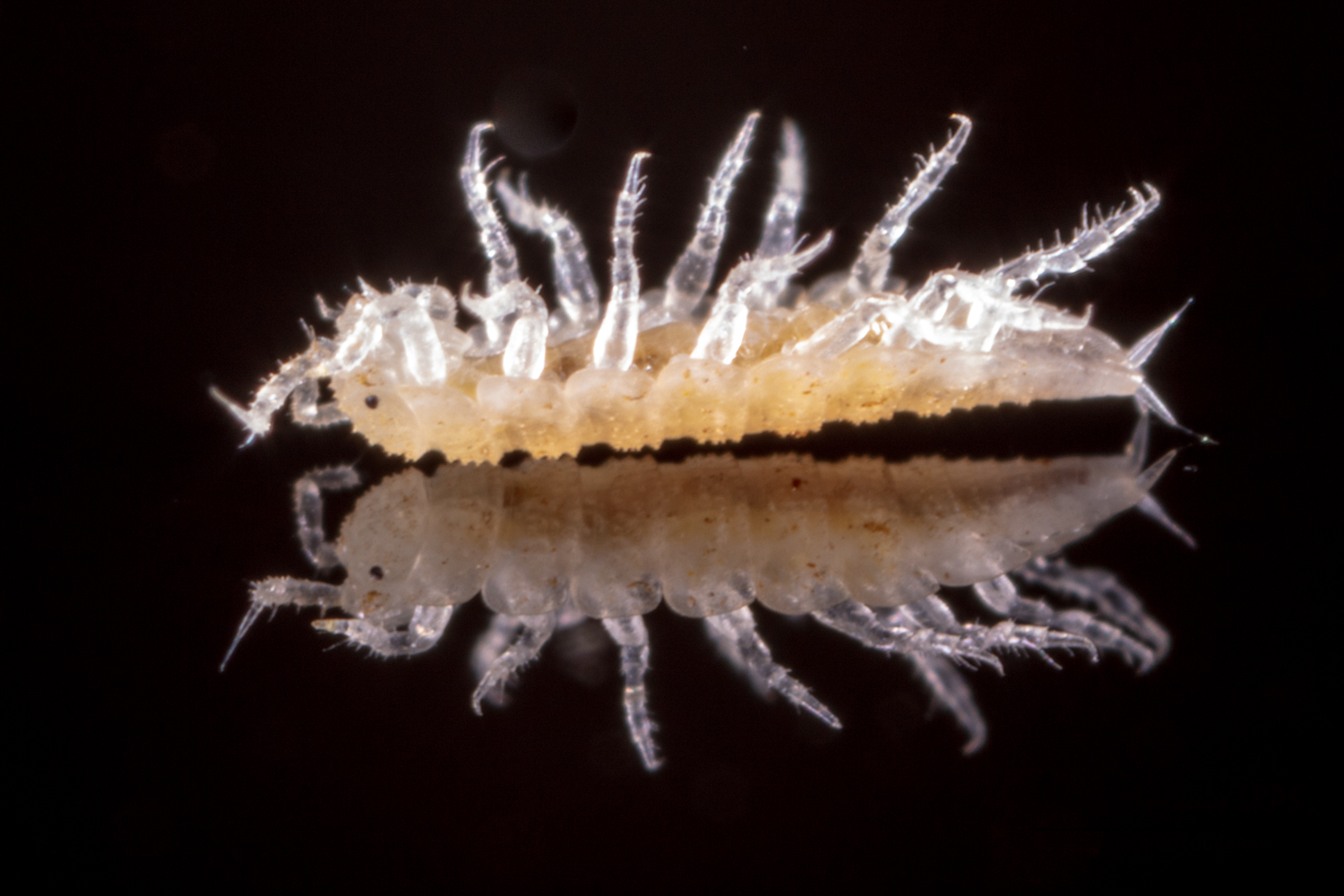
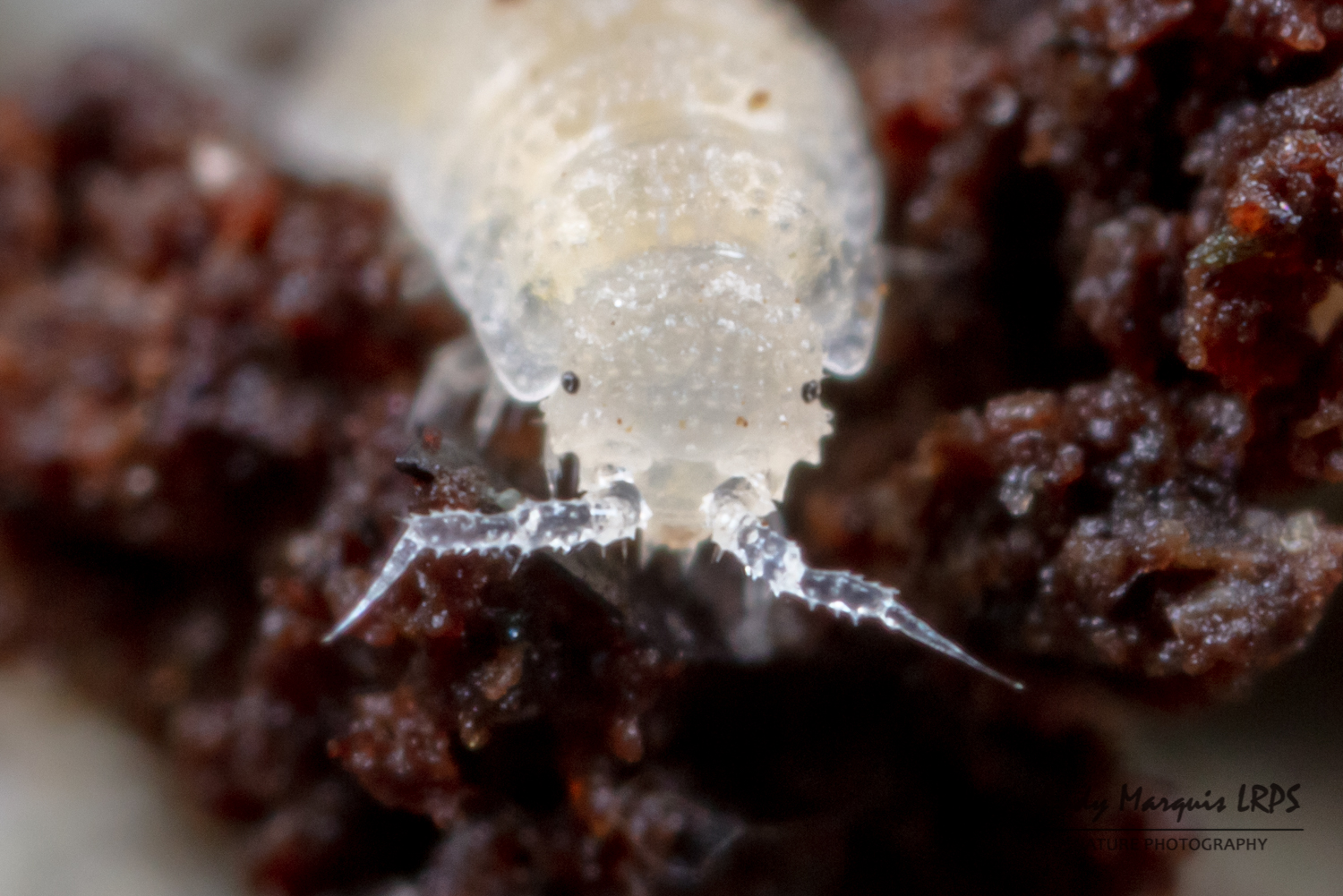

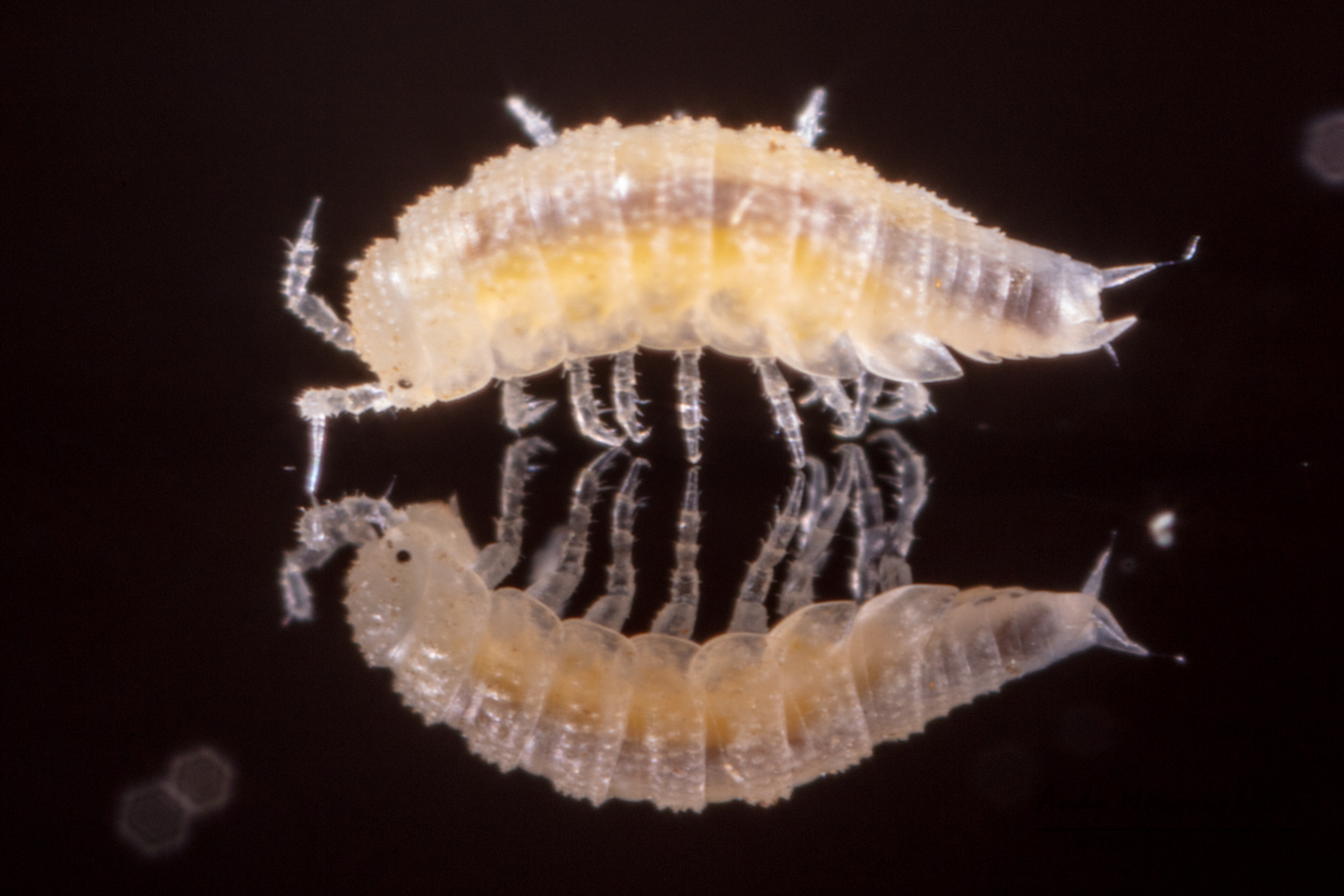
Oniscus asellus - Common Shiny Woodlouse


Philoscia muscorum - Common Striped Woodlouse
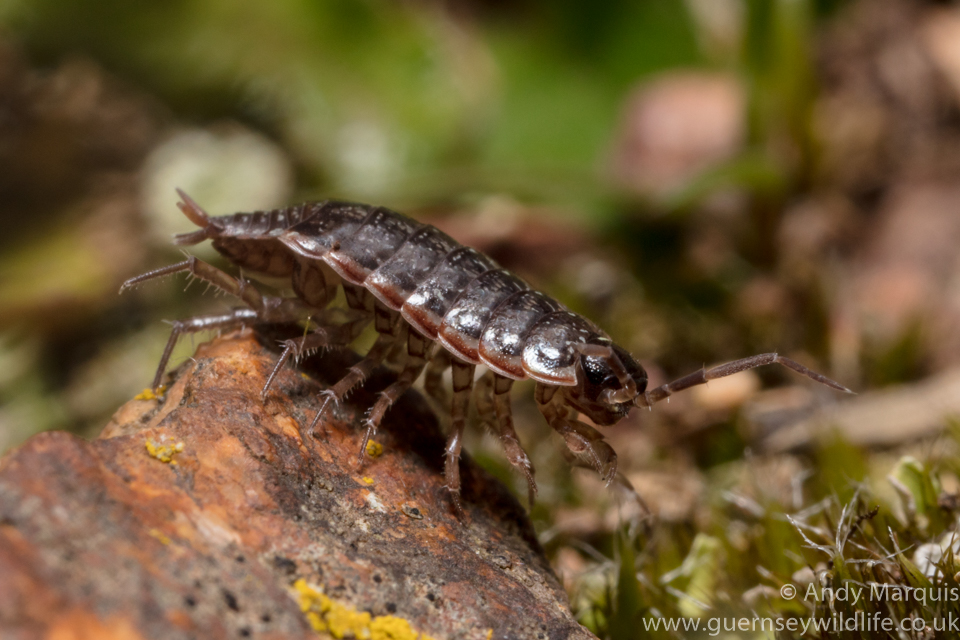
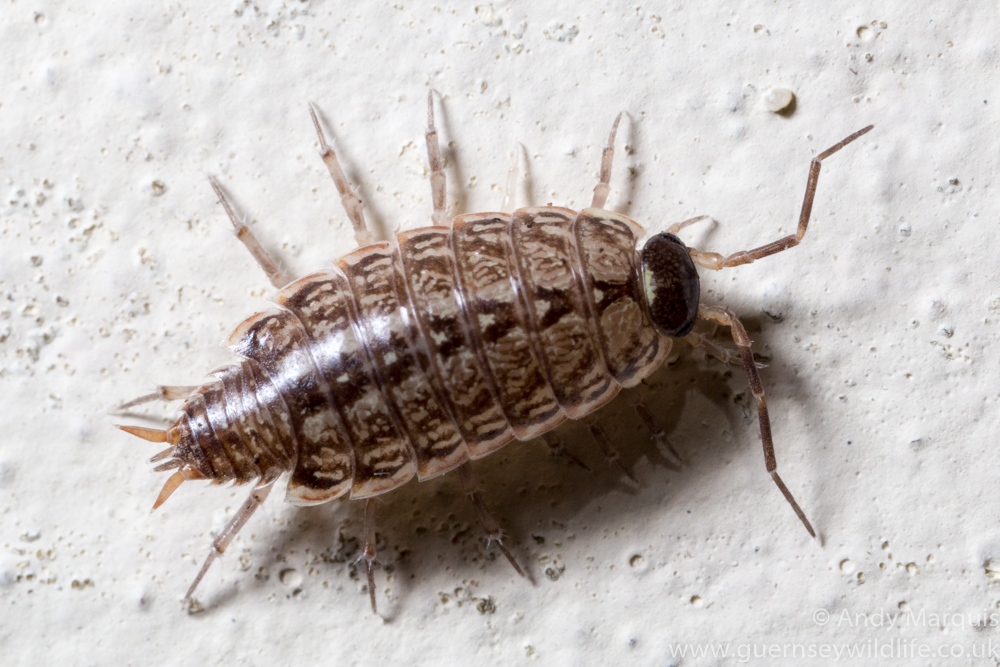
Platyarthrus hoffmannseggi - Ant Woodlouse
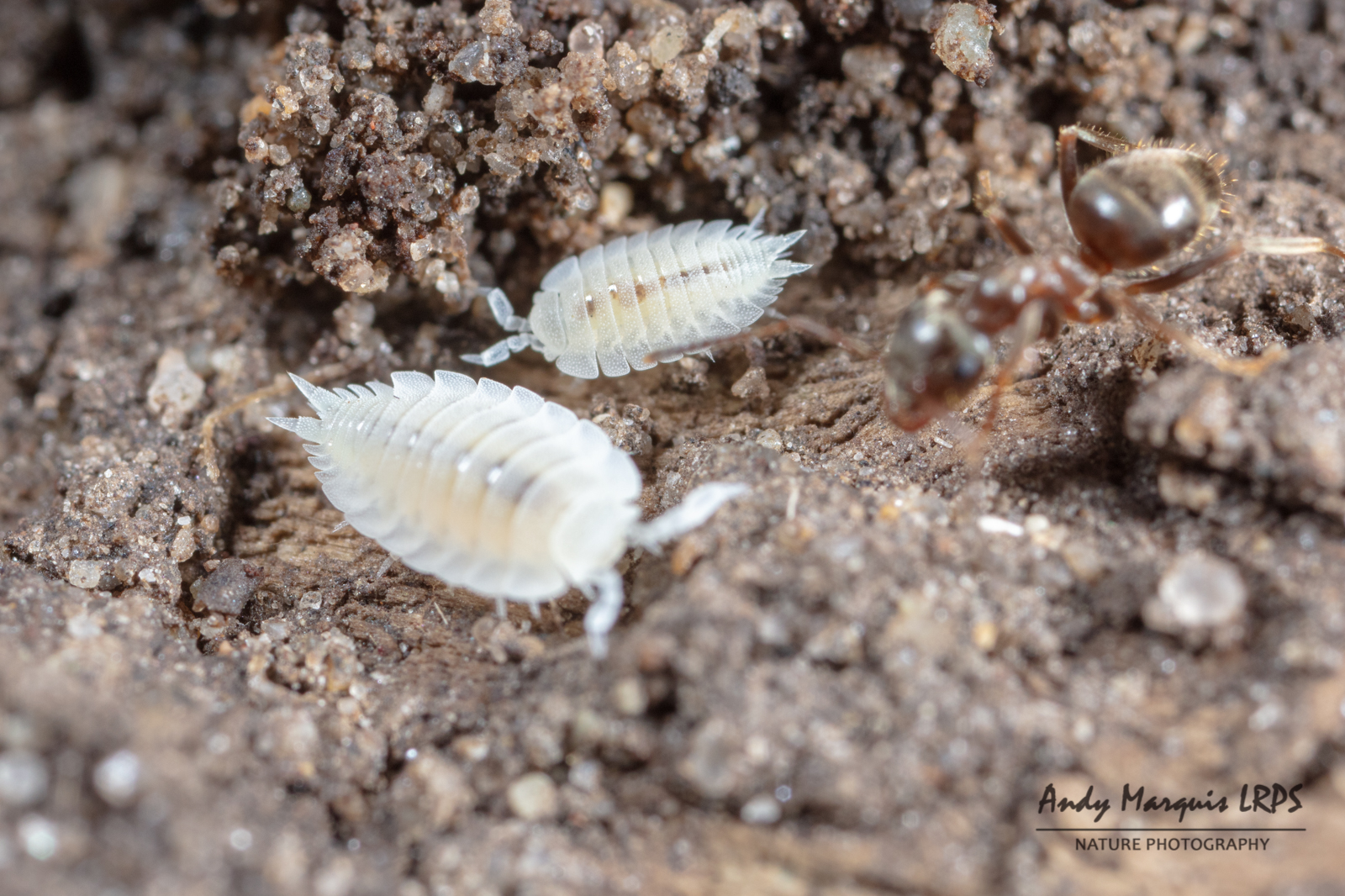

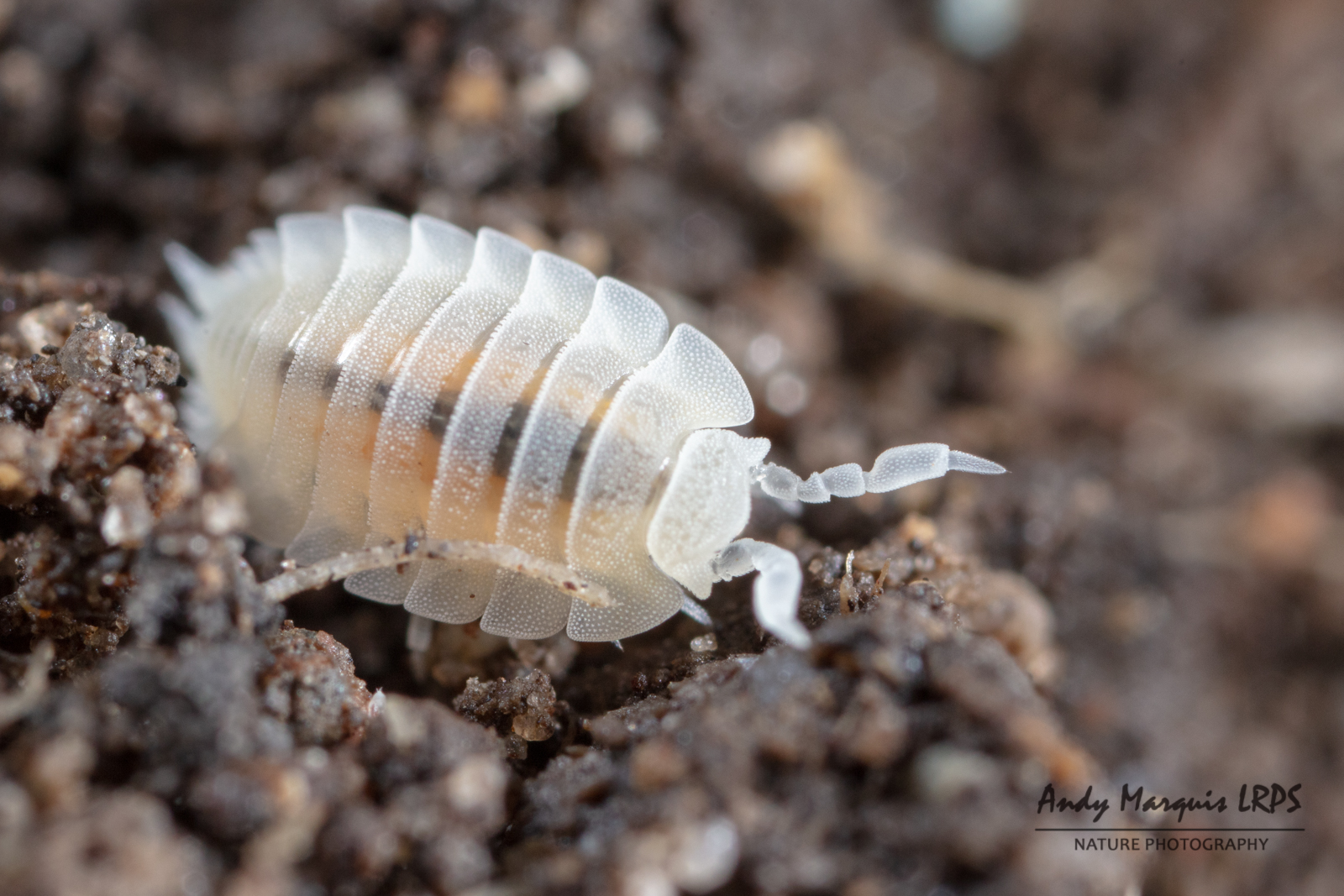
Porcellio dilatatus
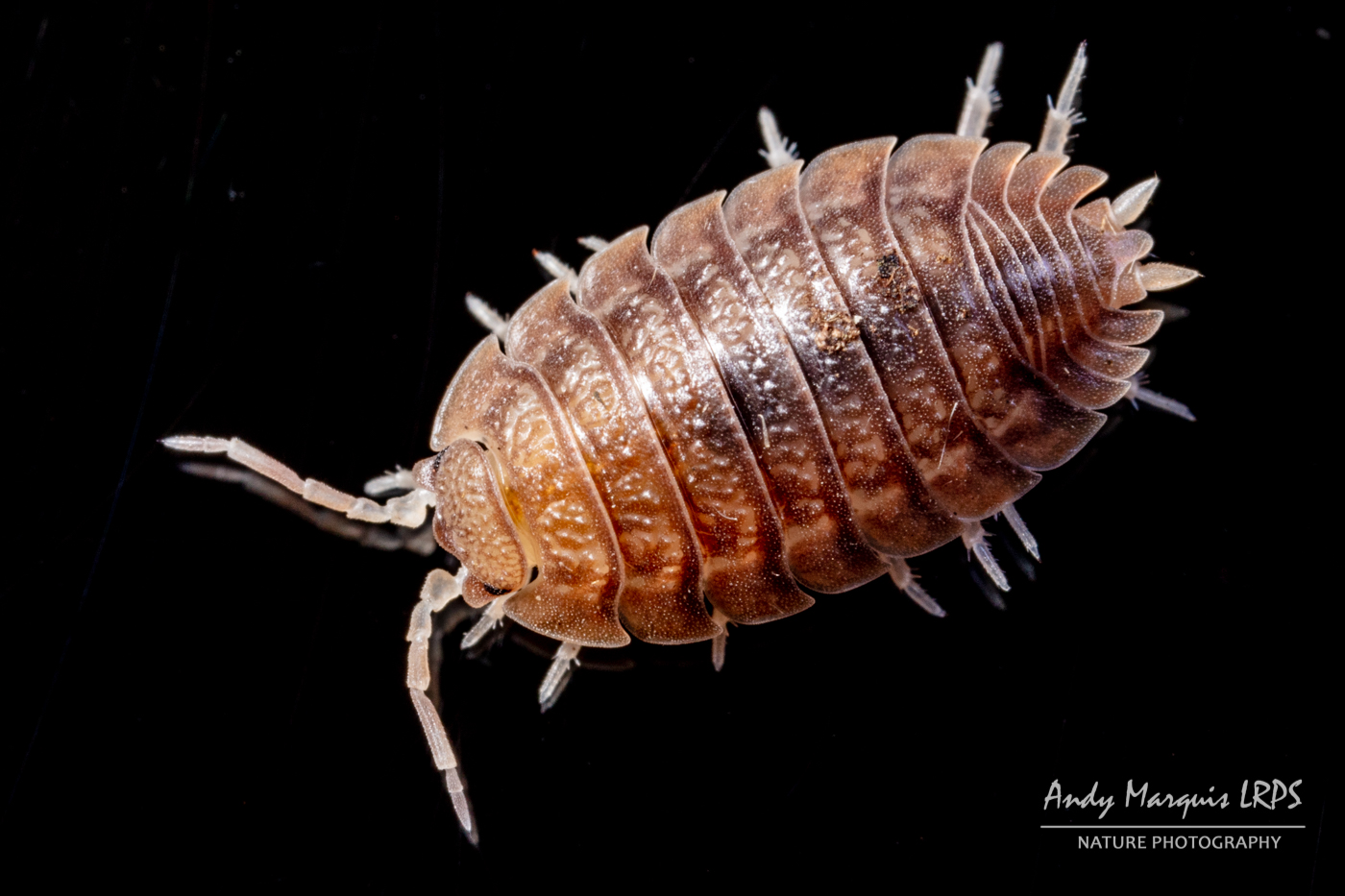

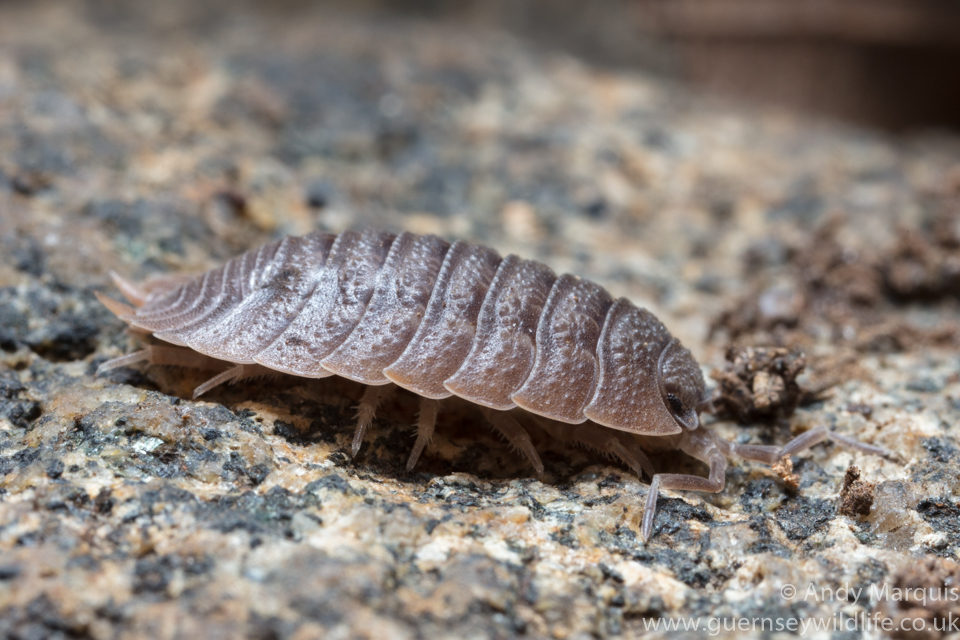
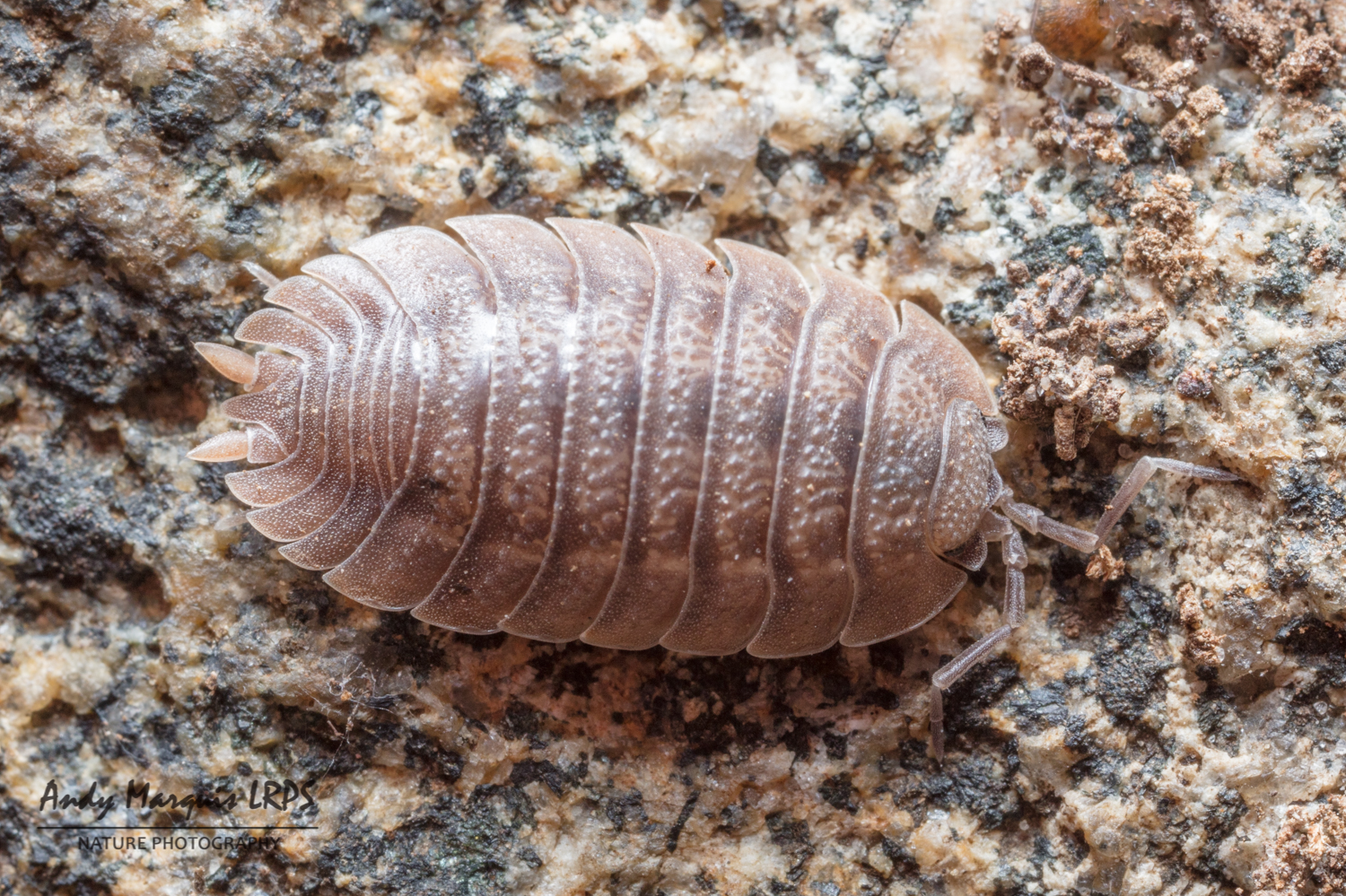
Porcellio scaber - Common Rough Woodlouse
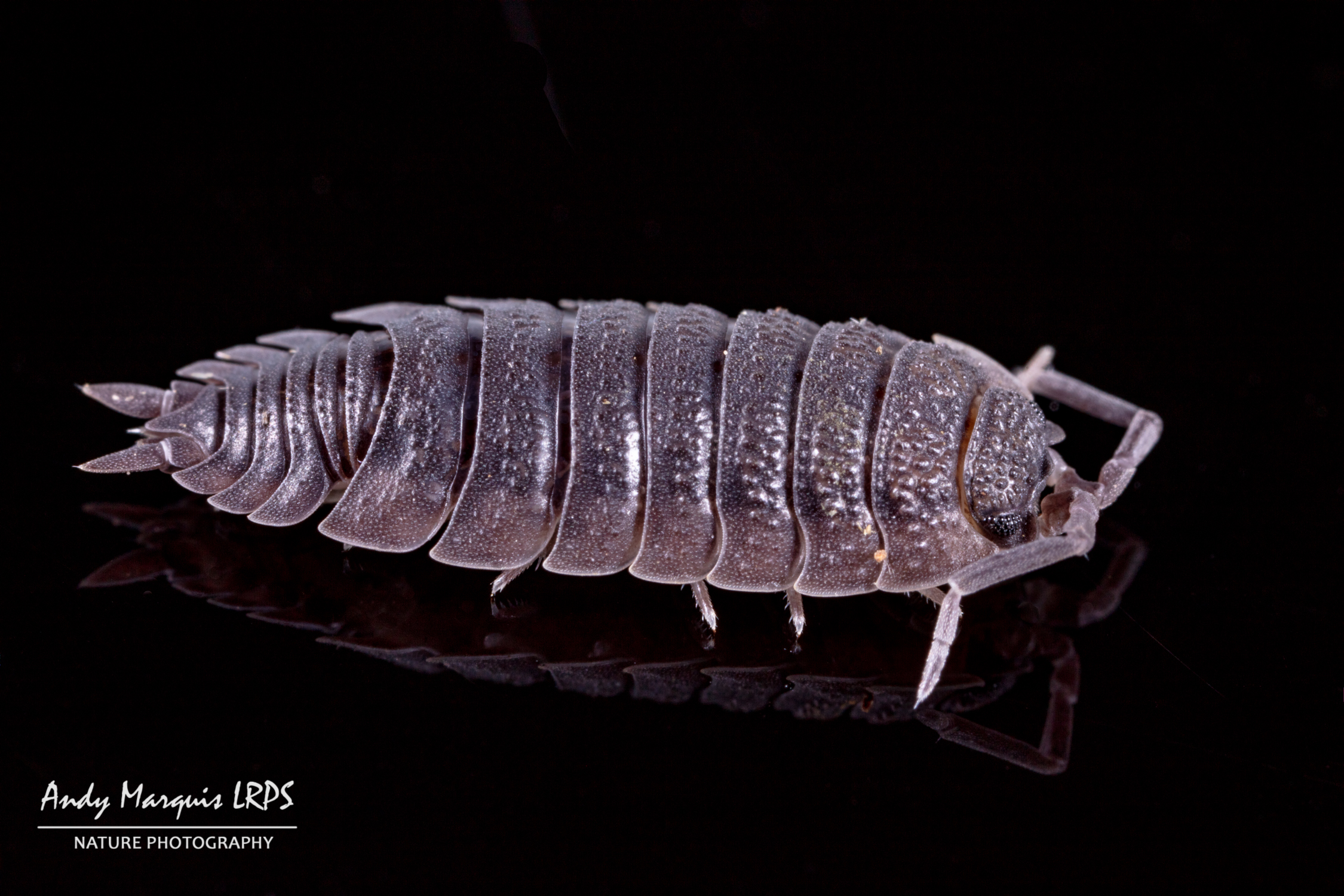
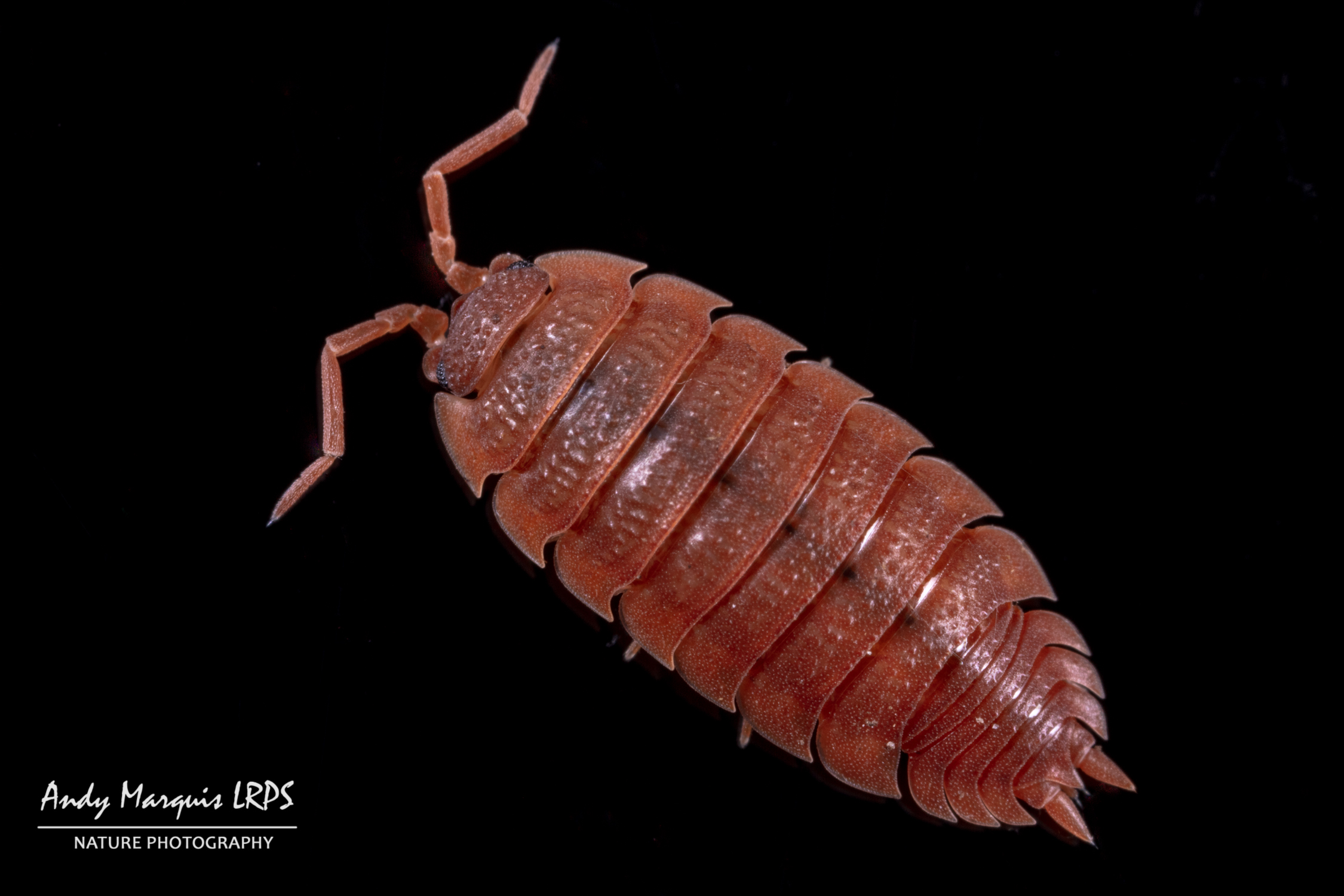
Porcellionides cingendus
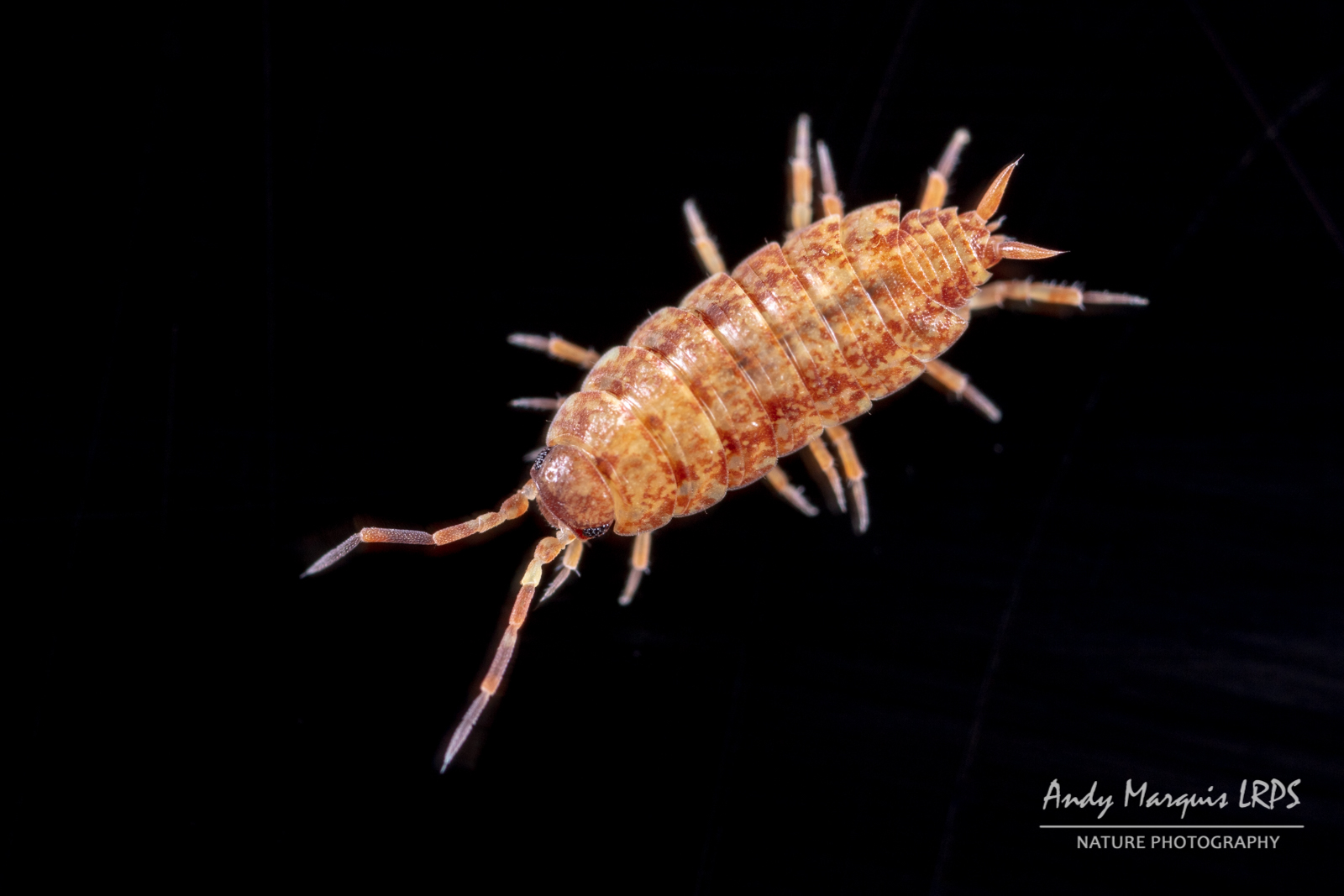


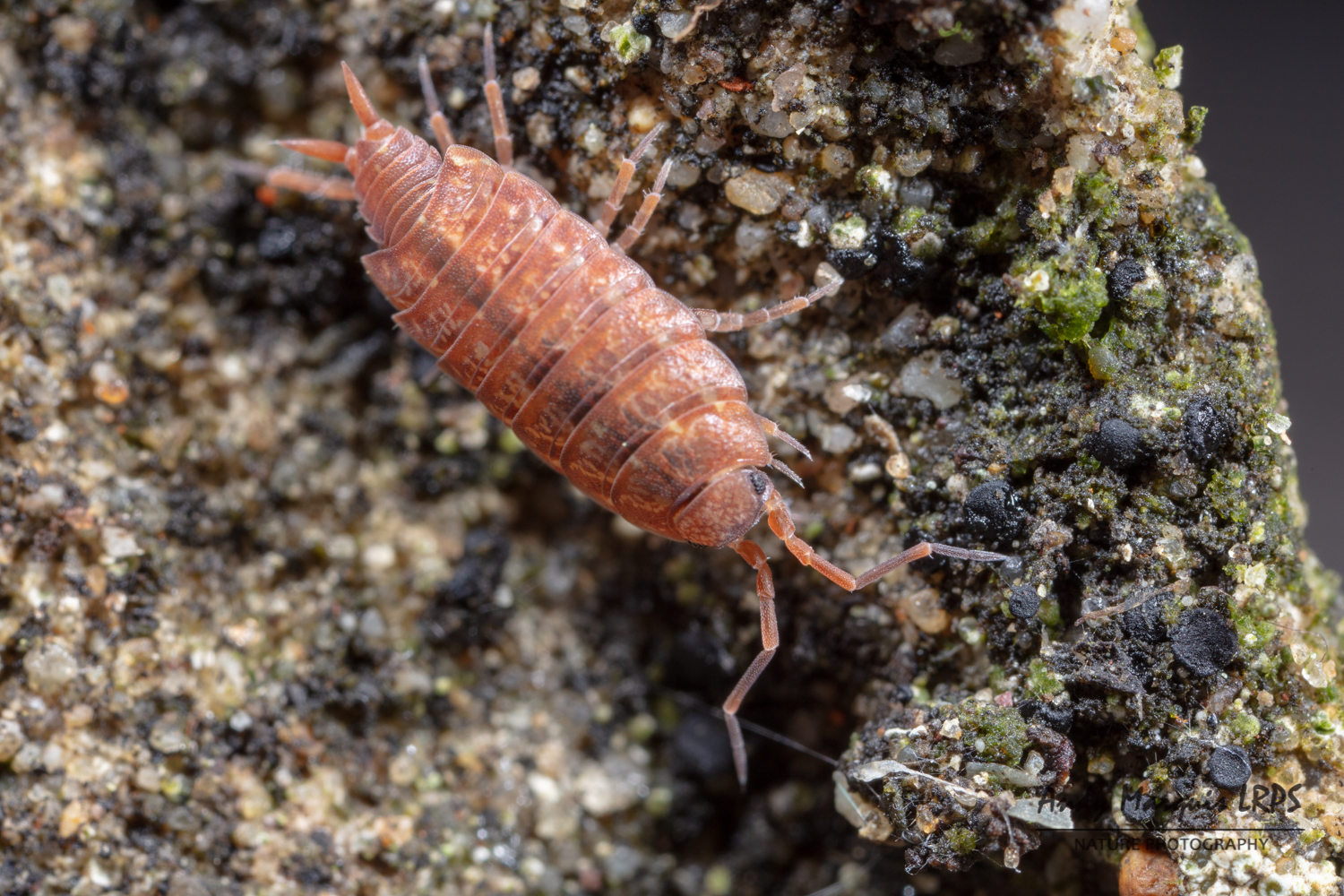
Porcellionides pruinosus

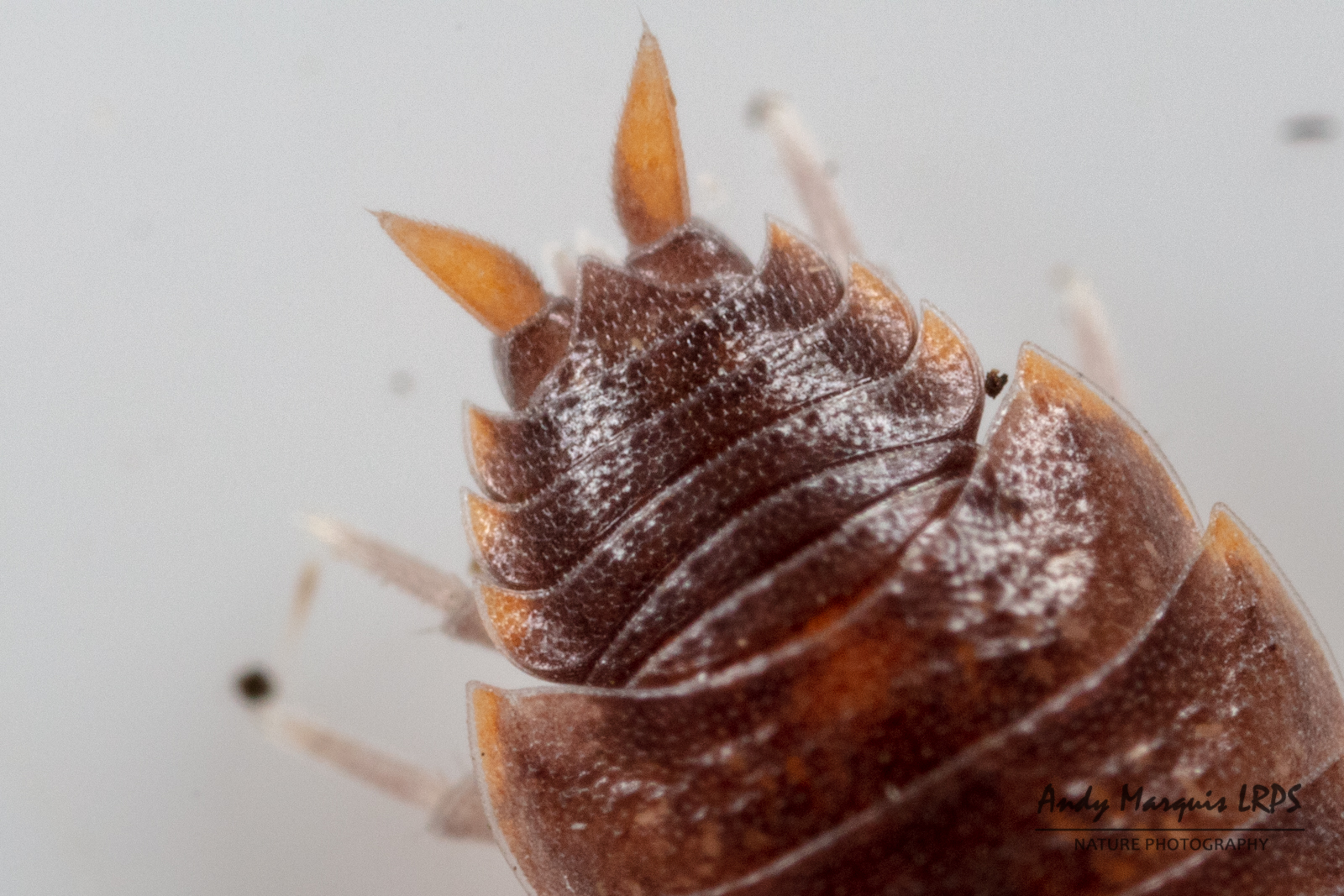
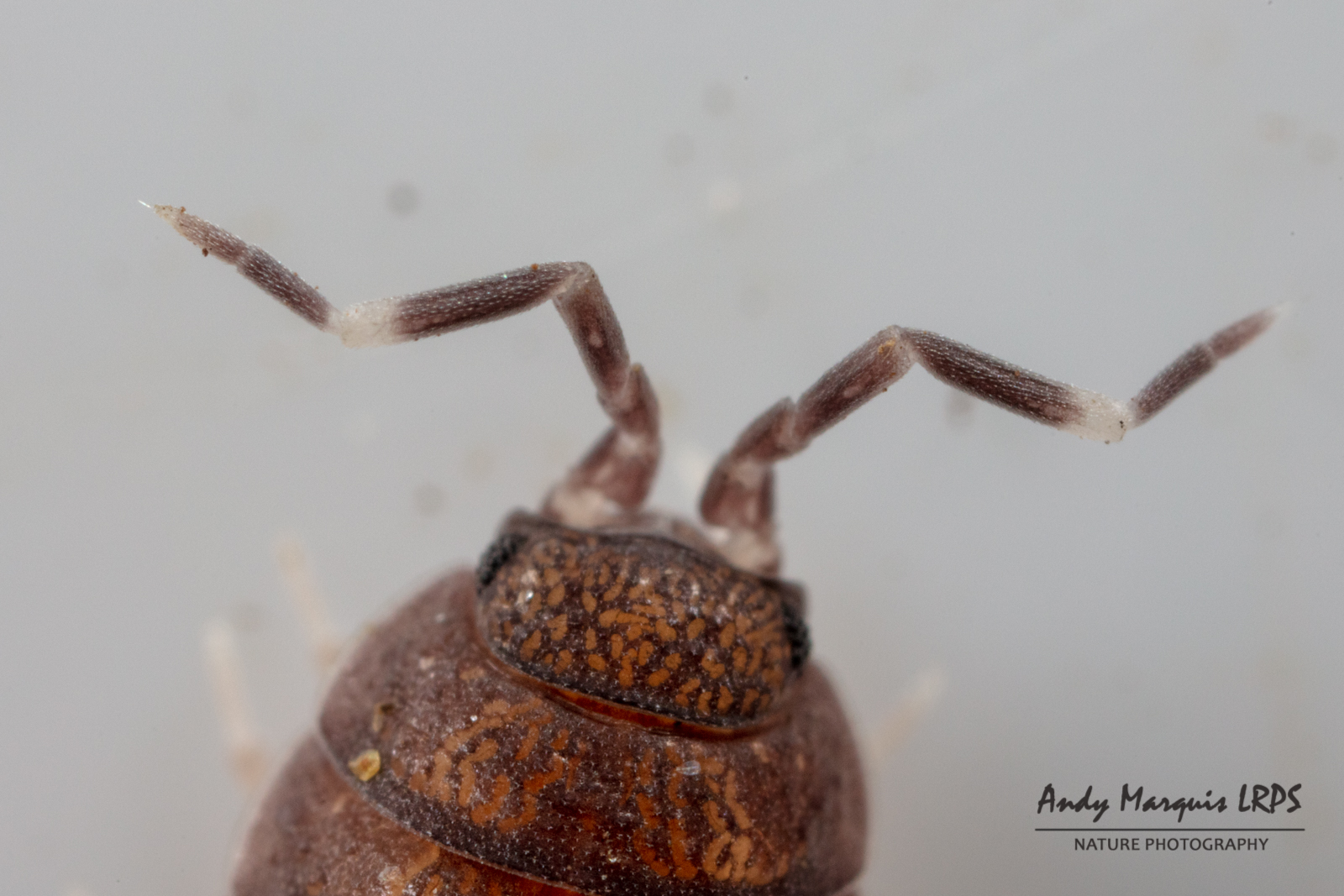
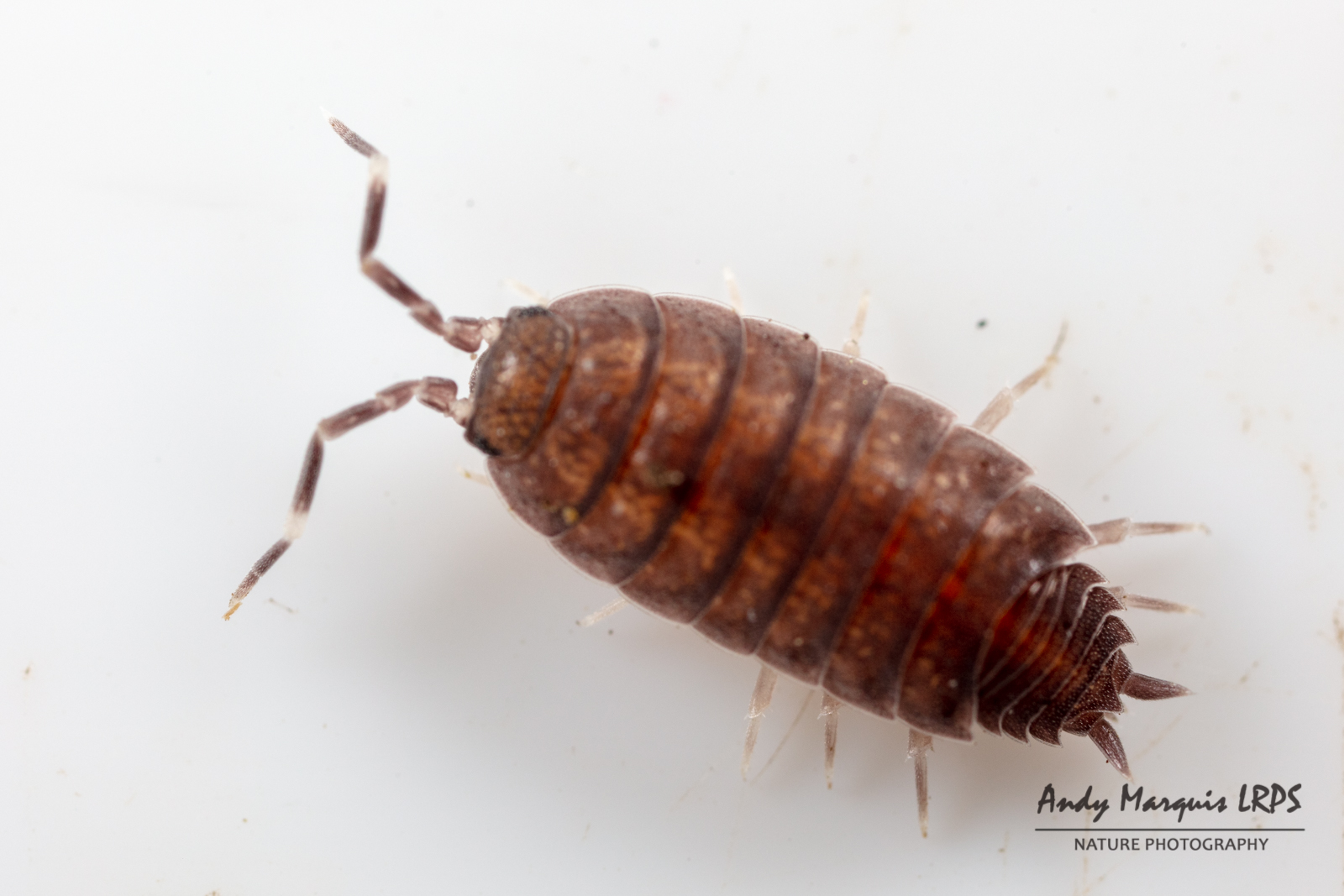
Trichoniscoides saeroeensis
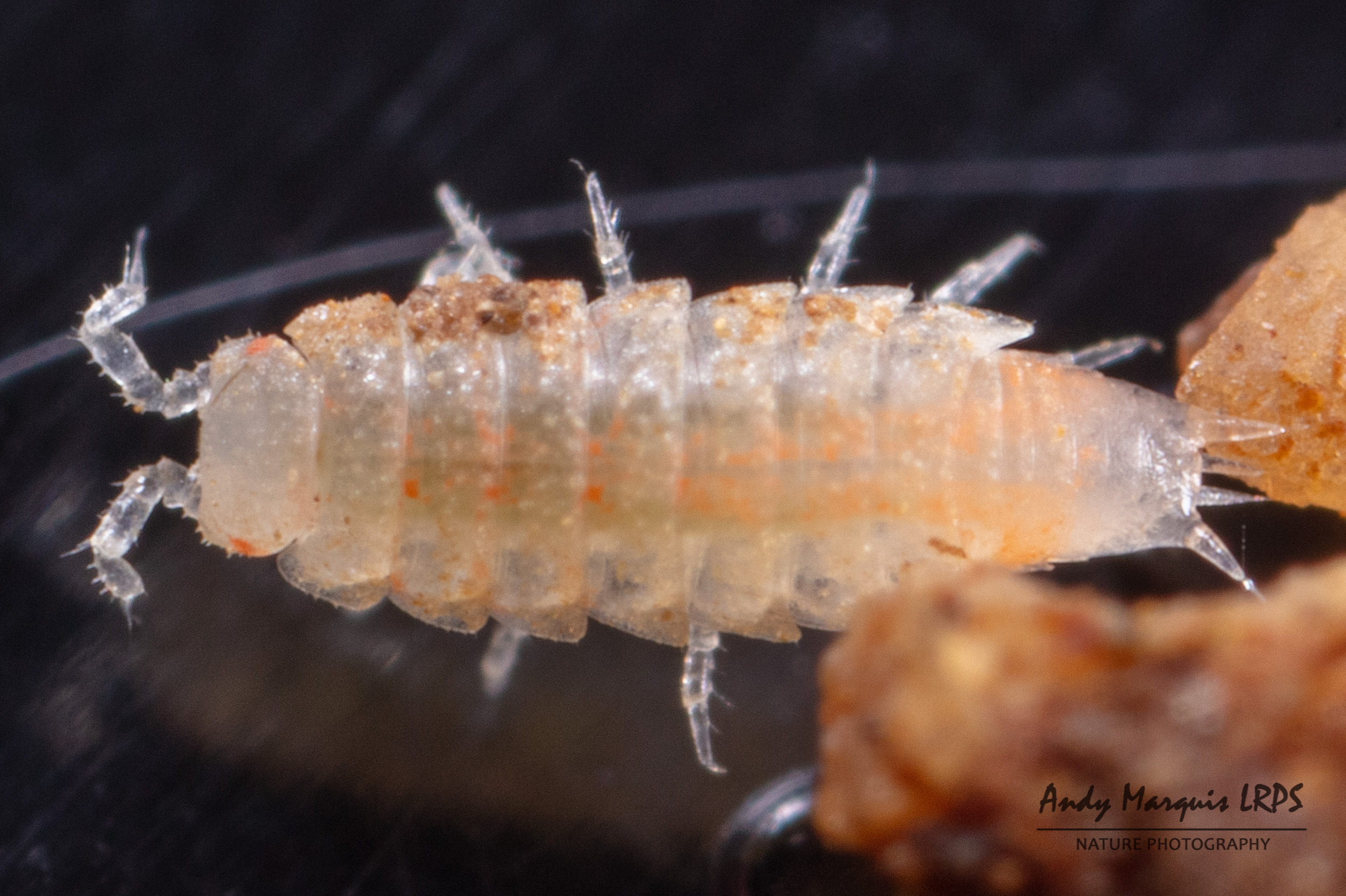

Trichoniscus pusillus - Common Pygmy Woodlouse
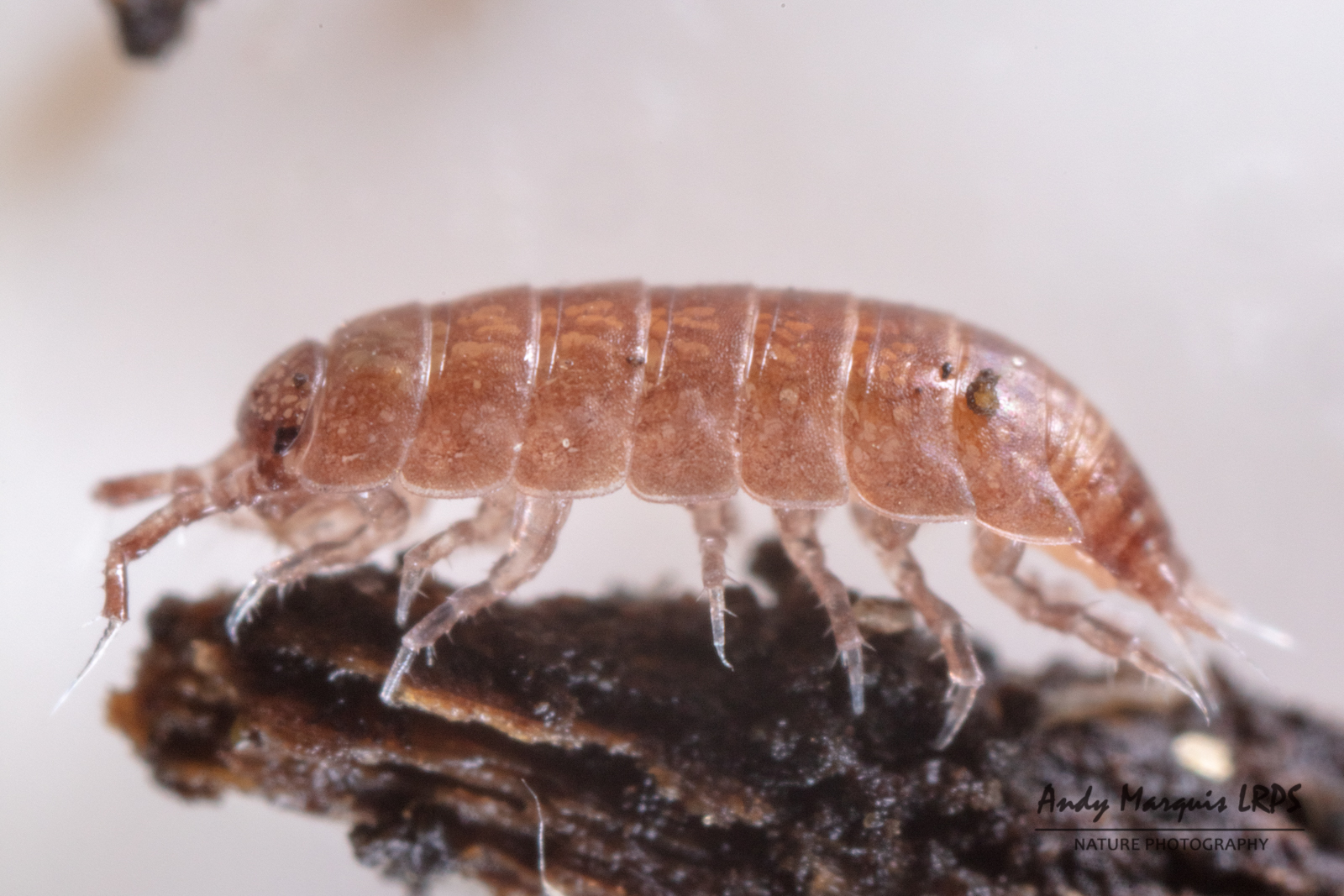
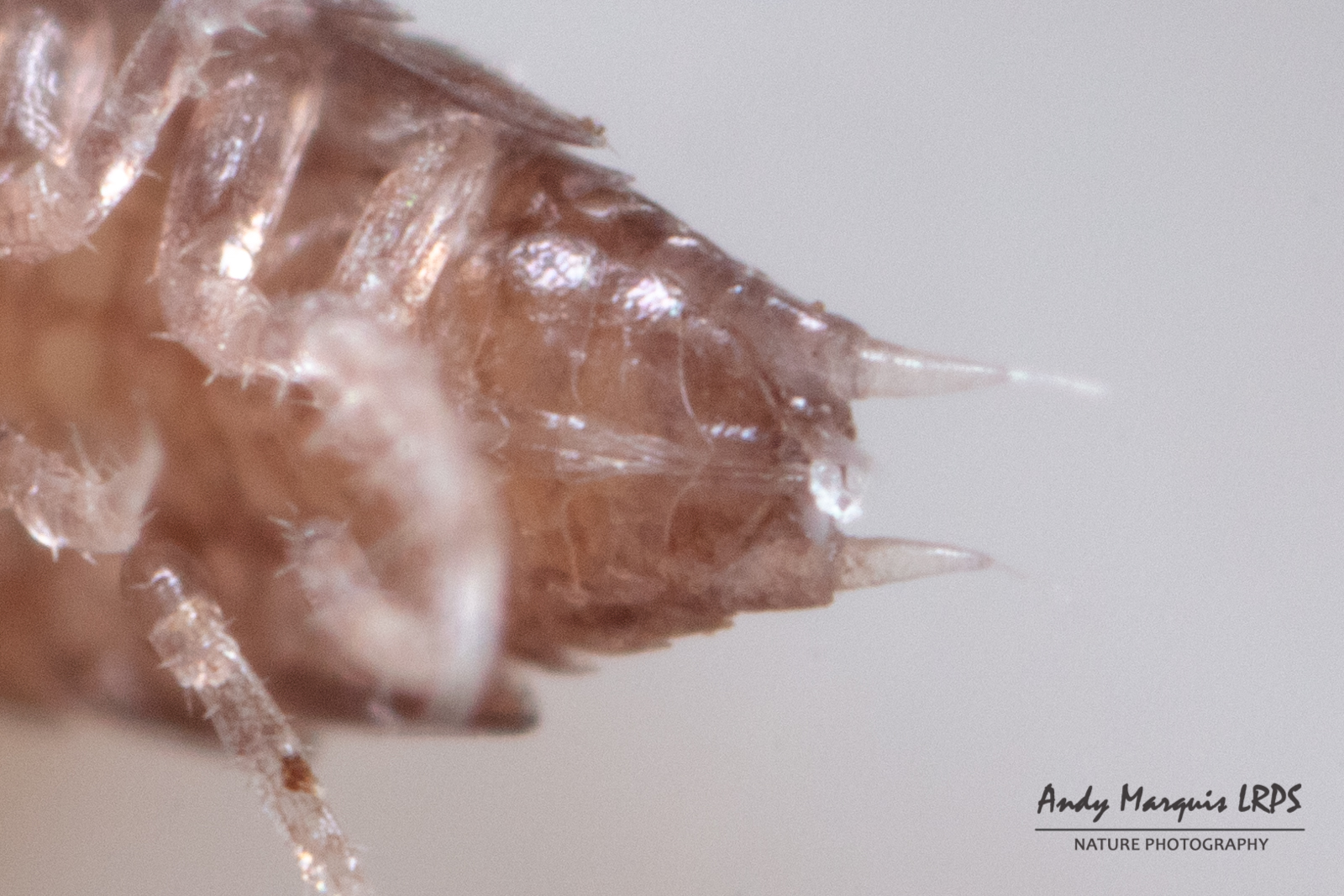
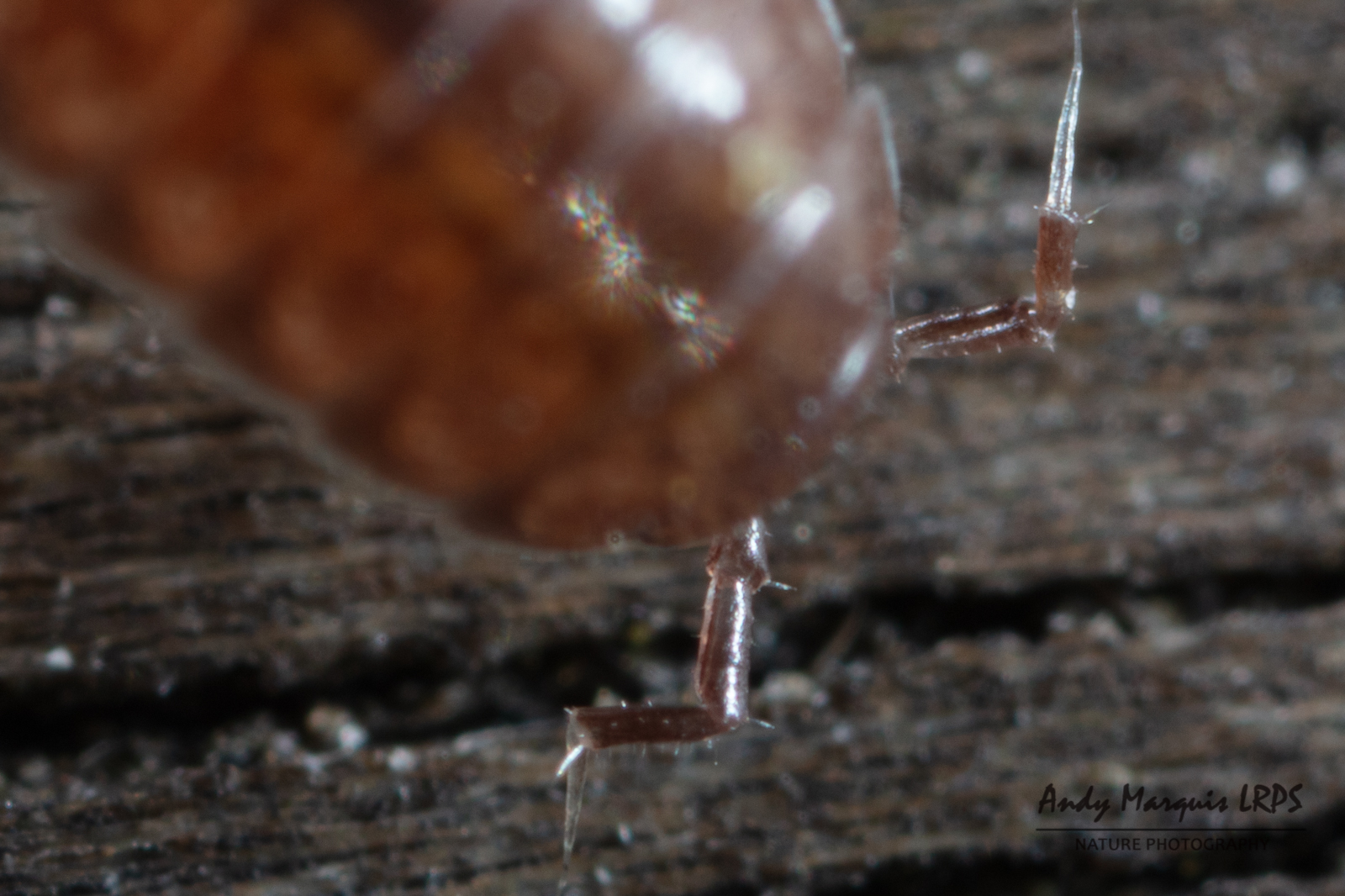
Trichoniscus pygmeus - Least Pygmy Woodlouse
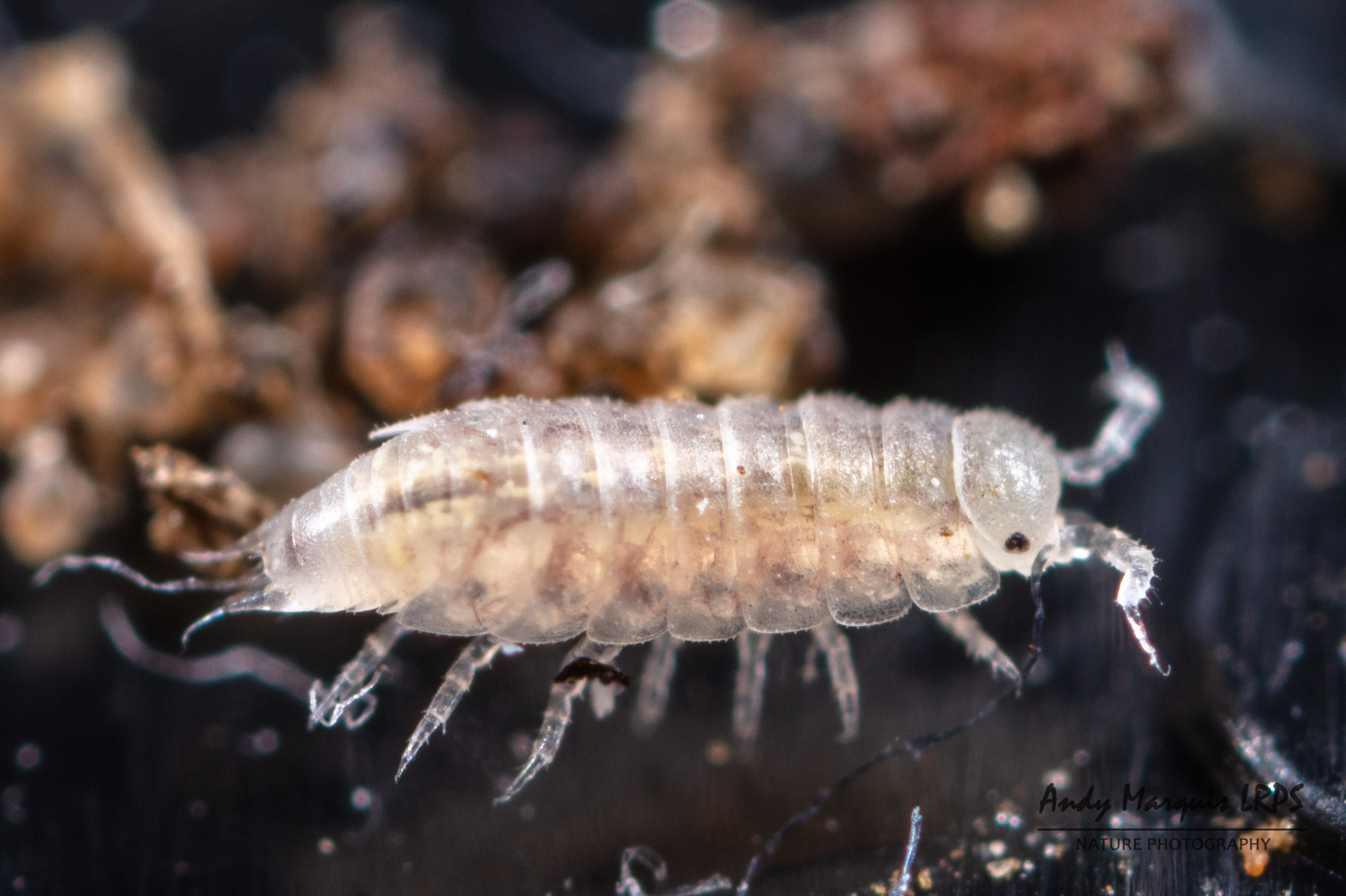
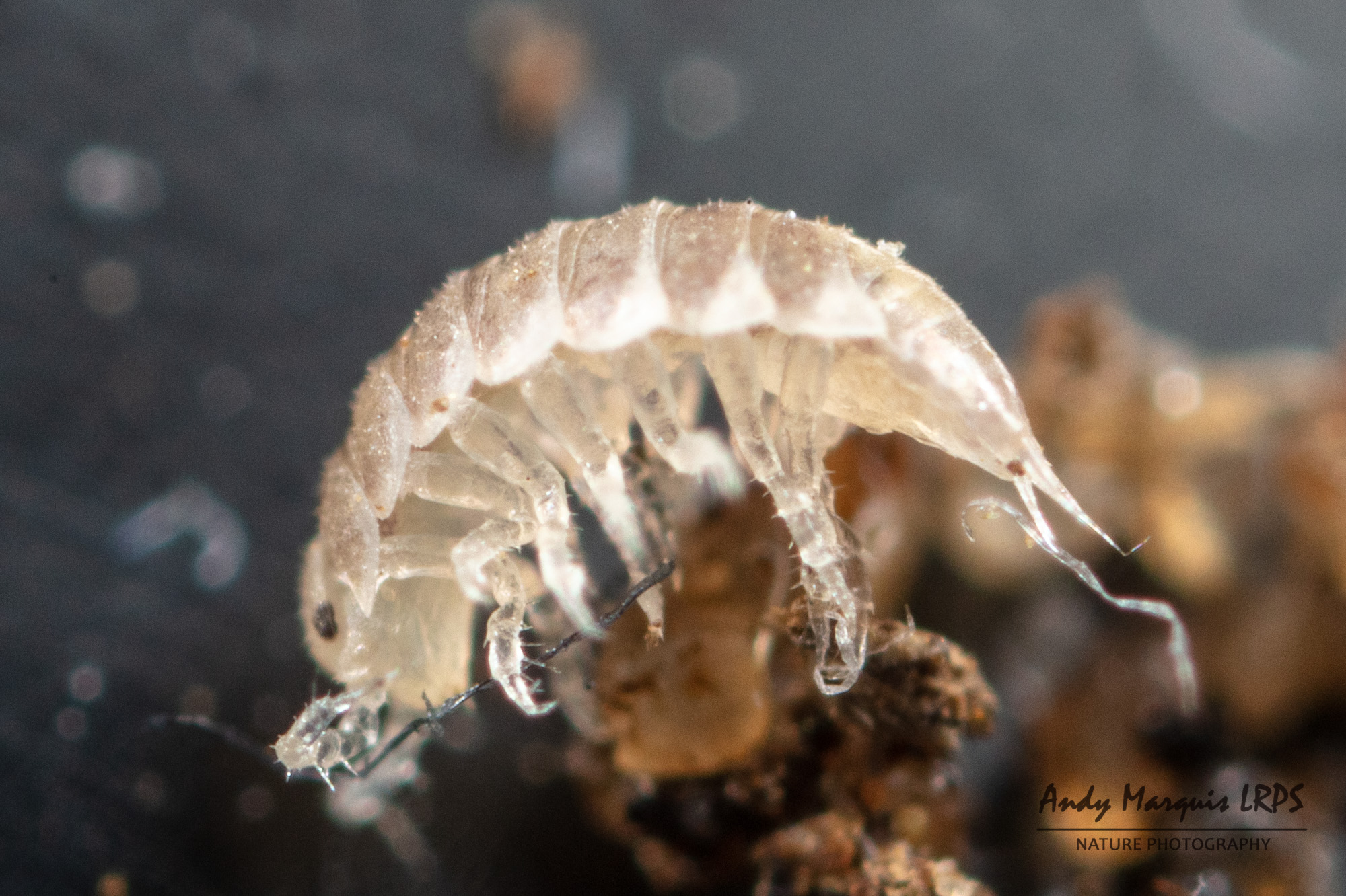
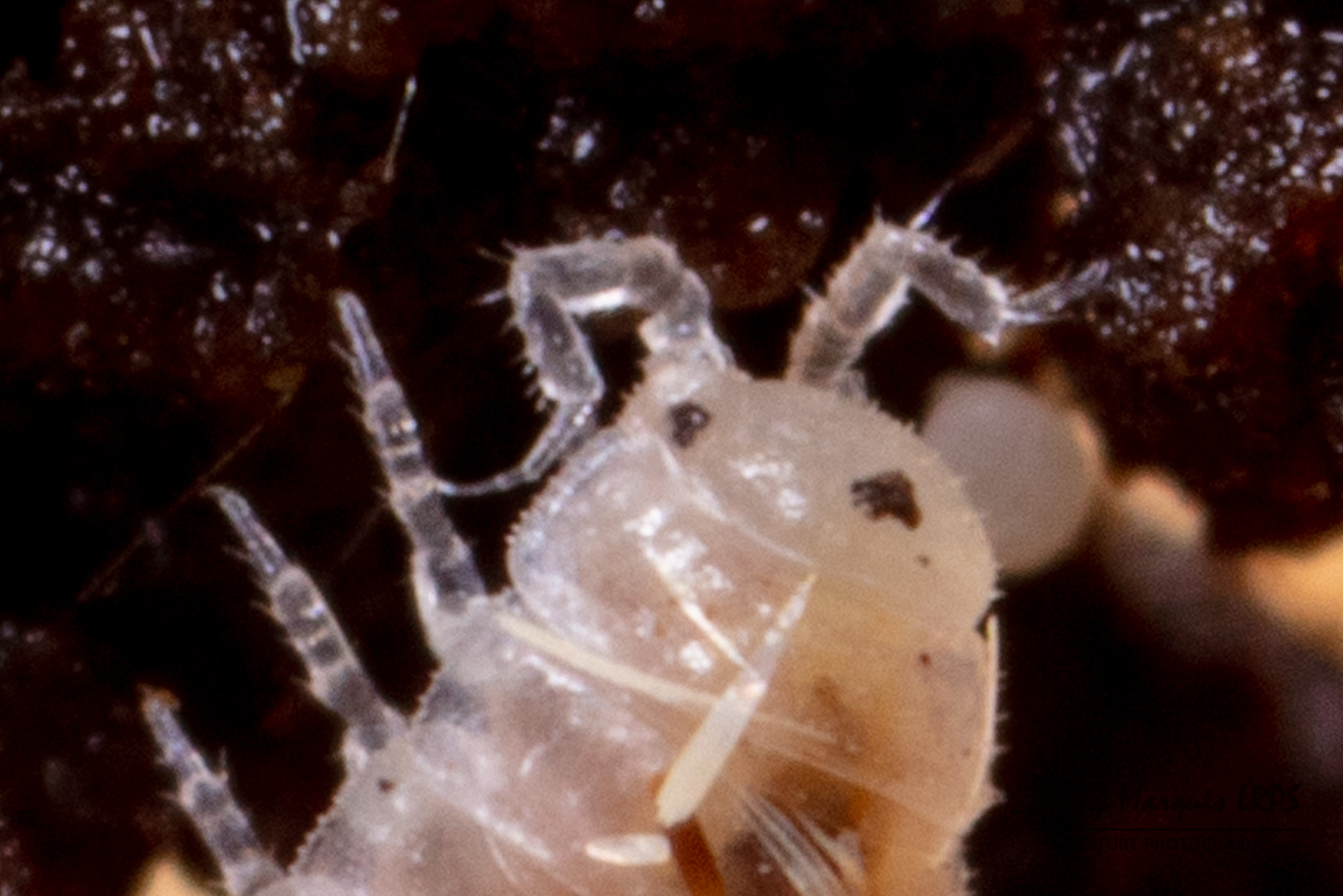
Asellus aquaticus
